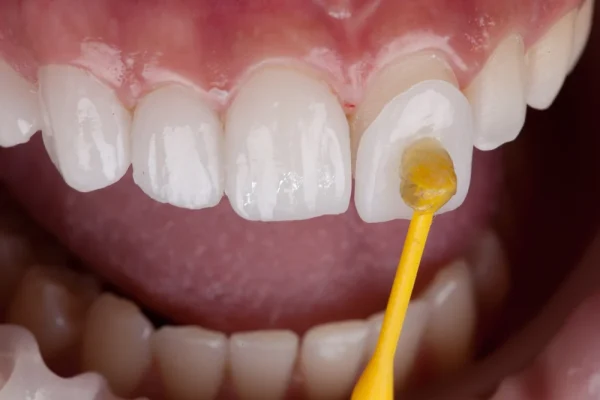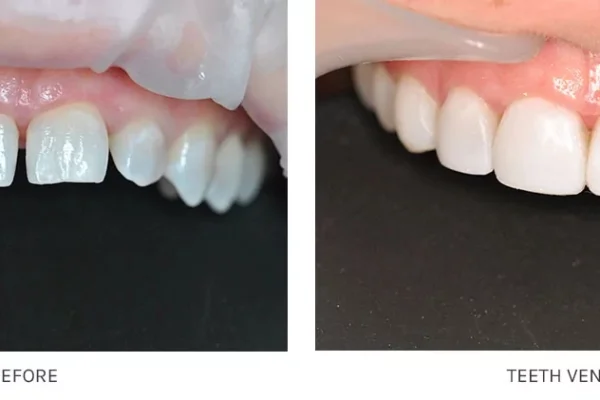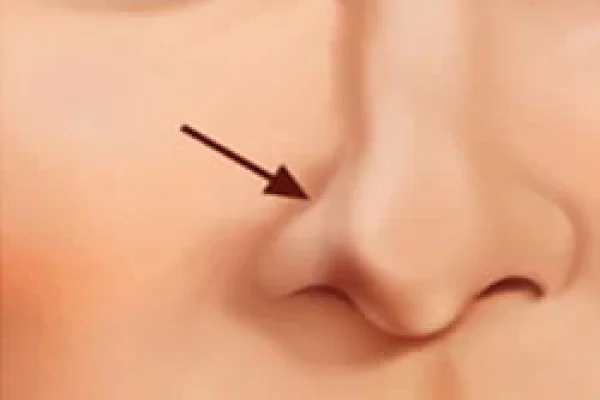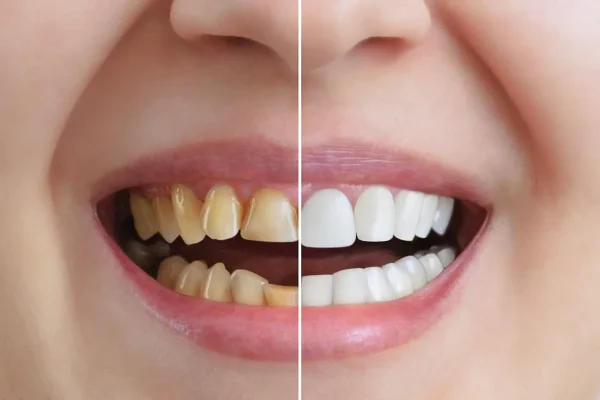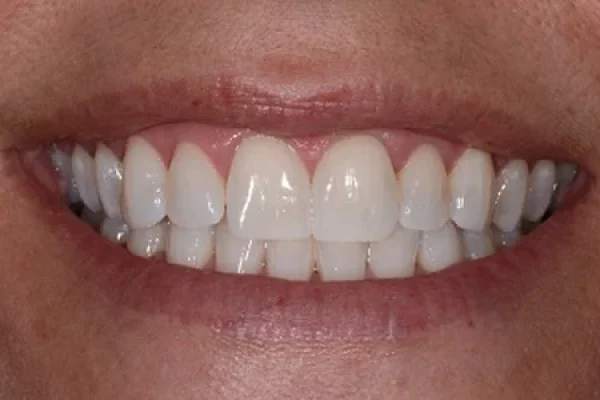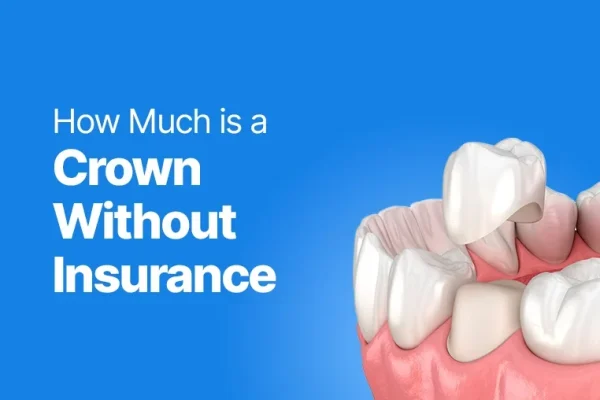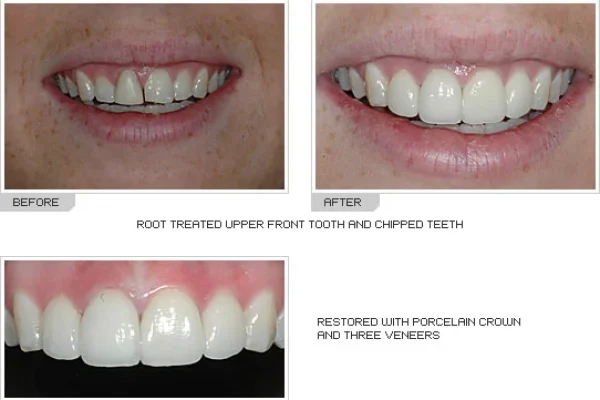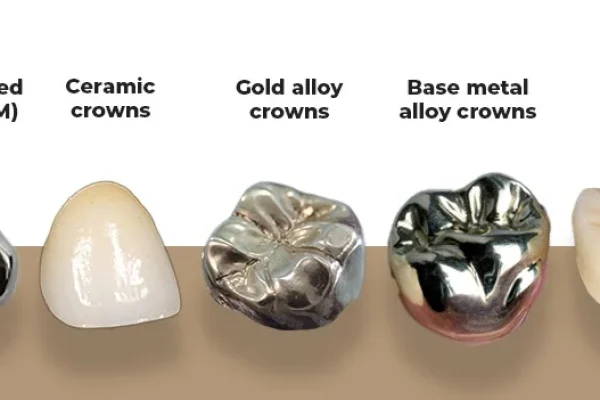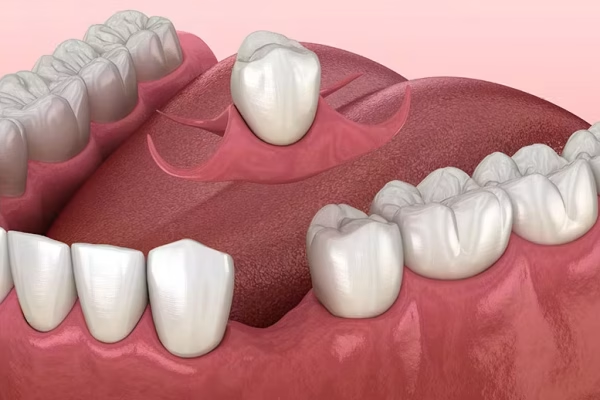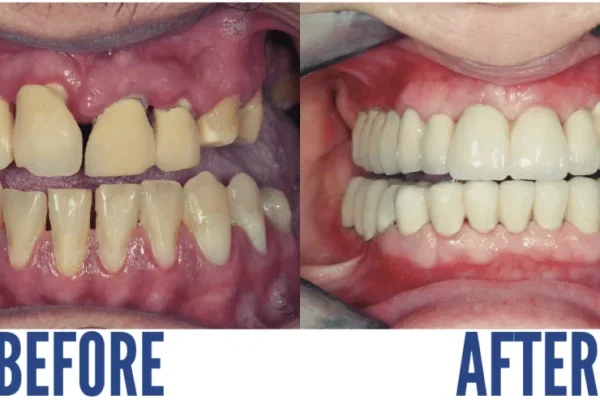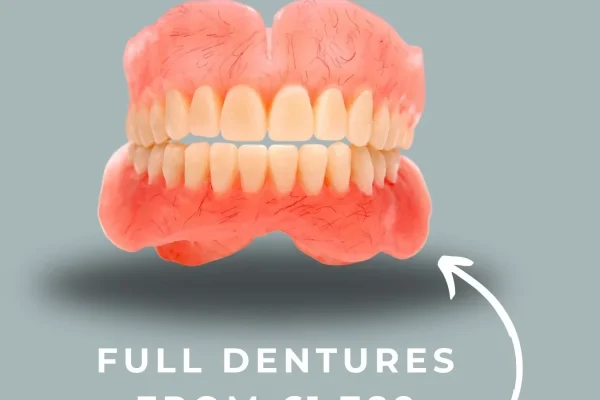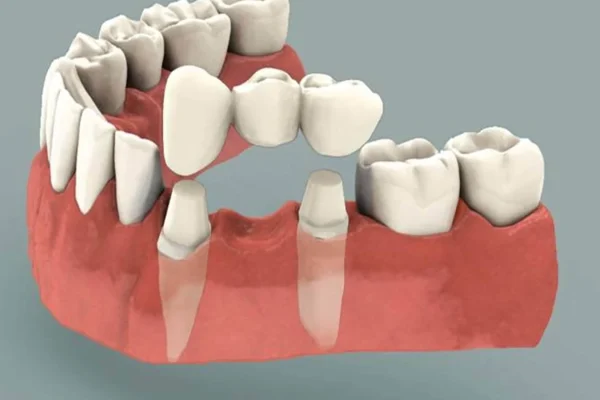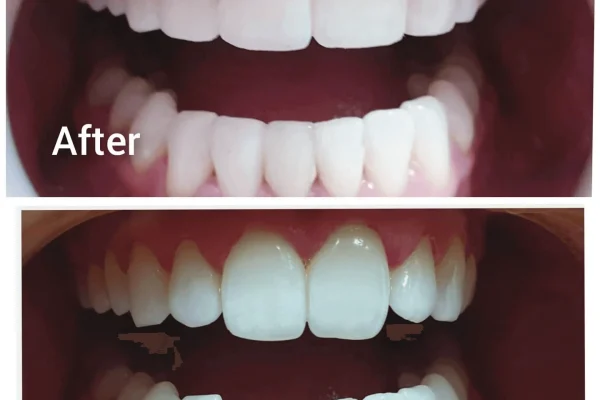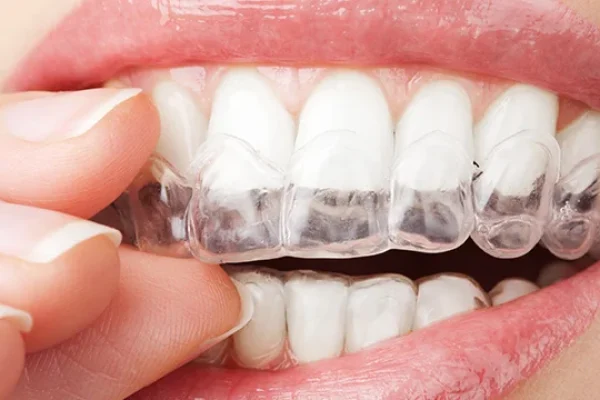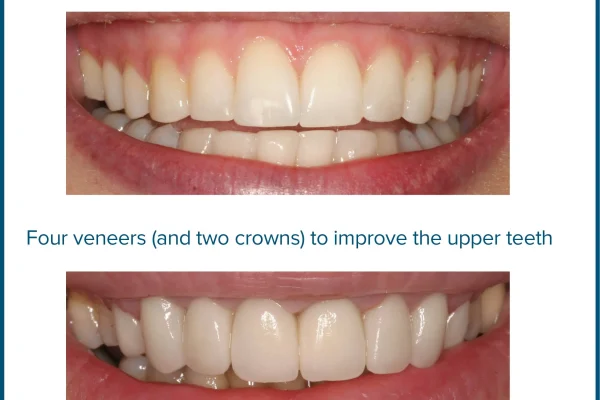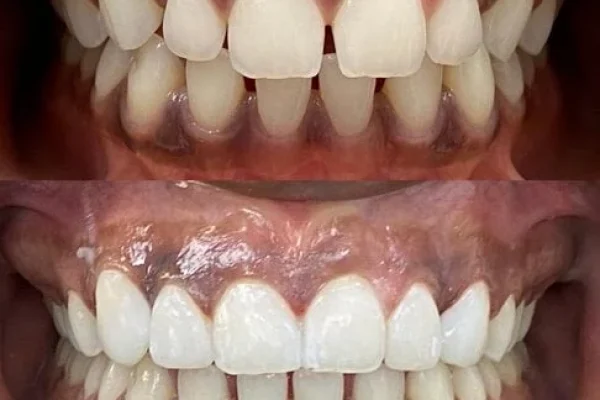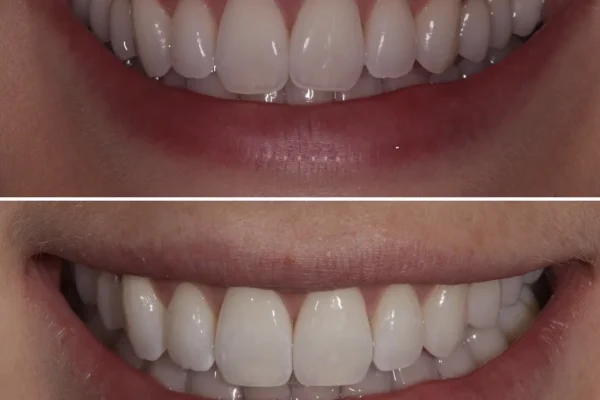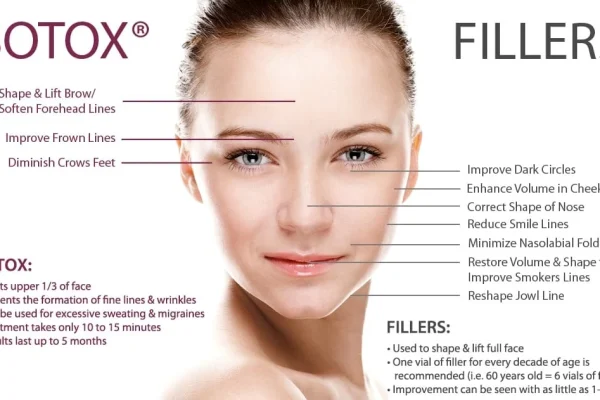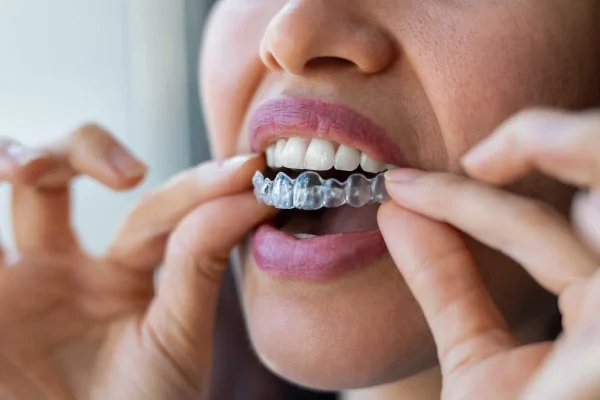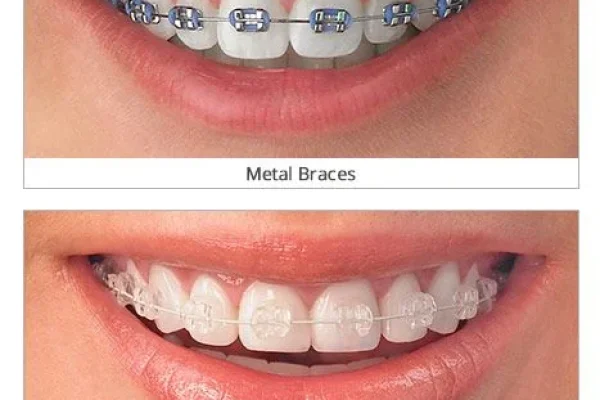
Table of Contents
ToggleKey Takeaways
-
- Clear teeth braces generally refer to clear aligners: transparent, custom-made, removable trays used for orthodontic treatment.
-
- Cost varies widely based on complexity, brand, and location (approx. $3,500-$8,000 in many Western countries), often comparable to or slightly more than traditional braces. Affordability options like payment plans and insurance exist.
-
- Clear aligners are highly effective for treating mild to moderate orthodontic issues (crowding, spacing, bite problems), with results comparable to braces for suitable cases.
-
- Success heavily relies on patient compliance: wearing aligners 20-22 hours per day is crucial.
-
- Primarily suitable for adults and teens; no strict upper age limit if oral health is good. Use in younger children is less common and case-dependent.
-
- Major advantages include near-invisibility, improved comfort compared to metal braces, and removability for eating, drinking, and easy oral hygiene.
- Requires discipline: aligners must be removed for all food and drinks (except water) and teeth must be brushed before reinsertion.
Welcome to the definitive guide on straightening your teeth with subtlety and style. If the thought of traditional metal braces makes you hesitate, you’re in the right place. The world of orthodontics has evolved, offering sophisticated solutions that blend seamlessly into your life. We’re talking about clear teeth braces – a category encompassing innovative treatments designed to give you the smile you’ve always wanted, without the metallic glint. This isn’t just about aesthetics; it’s about leveraging advanced technology for effective, comfortable, and often faster results. In this comprehensive exploration, we’ll dismantle the jargon, tackle the costs, evaluate the effectiveness, and guide you through the entire process, from initial consultation to dazzling final reveal. Whether you’re considering clear aligners, exploring specific brands like Invisalign, or simply curious about how these modern marvels work, prepare to have your questions answered. We’ll delve into who makes a suitable candidate, what daily life looks like during treatment, and how these options stack up against their conventional counterparts. Consider this your go-to resource, meticulously crafted to empower your decision-making journey towards a confident, straighter smile. Let’s cut through the noise and get straight to the facts, presented with the clarity these braces themselves promise. The future of your smile starts here, and it looks remarkably clear. Get ready to explore the nuances, weigh the pros and cons, and discover if this is the right path for you.
What Exactly Are Clear Teeth Braces and Similar Options?
Navigating the landscape of modern orthodontics can feel like learning a new language, especially when terms like “clear braces,” “invisible aligners,” and “transparent aligners” are used almost interchangeably. So, what exactly are we talking about? At its core, this category refers to orthodontic appliances designed to be significantly less conspicuous than traditional metal braces. The primary goal remains the same: to gradually shift your teeth into a more aesthetically pleasing and functionally optimal alignment. However, the method is where the innovation shines. Instead of metal brackets and wires, these treatments typically rely on tooth-coloured ceramic brackets (often called ‘clear braces’ in a more literal sense) or, more commonly, a series of custom-made, transparent plastic trays known as clear aligners. Think of clear aligners as precision-engineered shells that snugly fit over your teeth, applying gentle, controlled pressure to guide them into place. This guide focuses primarily on the latter – the clear aligner systems that have revolutionized smile design – while acknowledging the existence of ceramic braces as another less-visible alternative. Understanding the terminology is the first step to demystifying the options and figuring out which path best suits your needs, lifestyle, and orthodontic requirements. We’ll break down the names, define the core concepts, and introduce you to the leading technologies in this space, ensuring you’re well-equipped to discuss your options confidently with a dental professional. This initial exploration lays the groundwork for understanding cost, effectiveness, and the day-to-day realities of treatment.
What are the Transparent Teeth Braces Called? Exploring the Terminology
Let’s clear up the confusion around the names. When people talk about less visible ways to straighten teeth, a flurry of terms often emerges. You’ll hear “clear teeth braces,” “transparent braces,” “invisible braces,” “clear aligners,” “transparent teeth aligner,” and “clear dental aligners.” While “clear braces” can sometimes refer specifically to braces using ceramic or clear brackets instead of metal ones, in popular conversation and much of the industry, these terms are overwhelmingly used to describe clear aligner therapy. Think of clear aligners as the dominant player in the “invisible orthodontics” game. These are the removable, see-through plastic trays custom-made for your teeth. So, if someone mentions “transparent teeth braces,” they are most likely referring to a clear aligner system like Invisalign, Smilelign, or Toothsi, rather than fixed ceramic braces. Resources like Wikipedia offer general overviews under the “Clear aligners” topic, confirming their status as a distinct category of orthodontic treatment. Understanding this common usage is key. While technically different things exist (ceramic fixed braces vs. removable plastic aligners), the prevailing public understanding and marketing often bundle them under similar “clear” or “invisible” descriptions, with aligners being the most prominent. Knowing the different labels helps you refine your search and ask specific questions when consulting with a provider, ensuring you’re discussing the exact type of treatment you’re interested in. The core takeaway? Most roads in the “clear teeth braces” conversation lead to clear aligners.
What are Clear Aligners or Invisible Braces? Defining the Concept
Now that we’ve navigated the terminology, let’s solidify the definition. Clear aligners, often marketed as invisible braces, are a series of custom-fabricated, removable orthodontic appliances made from a transparent, medical-grade plastic material. Unlike traditional braces, which involve brackets bonded to the teeth and connected by wires, clear aligners are smooth, single-piece trays that fit snugly over your entire dental arch, much like a very thin, precise mouthguard. Each aligner in the series is slightly different, designed to apply targeted, gentle pressure to specific teeth, gradually moving them towards their predetermined final positions according to a digitally mapped treatment plan. The “invisible” aspect comes from the transparency of the plastic – when worn, they are significantly less noticeable than metal braces, offering a major aesthetic advantage that appeals particularly to adults and image-conscious teens. Functionally, their removability is a key differentiator. You take them out to eat, drink anything other than plain water, brush, and floss. This eliminates the food restrictions associated with traditional braces and allows for much easier oral hygiene maintenance. While “invisible” is a slight exaggeration (they can be noticed up close, especially if attachments are needed), their discreet nature is undeniable and forms the cornerstone of their popularity as a modern teeth-straightening solution. They represent a significant leap in orthodontic technology, blending effectiveness with aesthetics and convenience.
Want to Learn More About ALIGNERS? Getting All About Clear Aligners
Diving deeper into the world of clear aligners reveals a sophisticated blend of dental science and cutting-edge technology. If you’re keen to understand the mechanics, think of it as a highly choreographed dance for your teeth, orchestrated by your dentist or orthodontist using advanced software. The process typically begins with a precise digital scan or physical impression of your teeth. This data is used to create a 3D model of your current bite. Then, using specialized software (like Invisalign’s ClinCheck), the practitioner maps out the desired final position of your teeth and plans the incremental movements needed to get there. This detailed plan dictates the exact shape of each aligner in your custom series. Each successive aligner, typically worn for one to two weeks, makes tiny adjustments, building upon the progress of the previous one. The key function is this application of controlled, consistent force over time. It’s not about brute strength but about persistent, gentle persuasion, guiding teeth along the planned path. The technology behind the aligner material itself is also crucial – brands often boast proprietary plastics (like Invisalign’s SmartTrack®) designed for optimal elasticity, force application, and comfort. Understanding this process helps appreciate why compliance (wearing them for the prescribed 20-22 hours a day) is paramount; the aligners only work when they are in contact with the teeth. Getting “all about clear aligners” means recognizing this synergy between digital planning, material science, and patient commitment.
What is Invisalign Treatment Specifically?
While “clear aligners” is the generic term, Invisalign stands as the pioneering and arguably most recognized brand name within this category. Launched by Align Technology in the late 1990s, Invisalign essentially brought clear aligner therapy into the mainstream. When people ask about Invisalign, they’re asking about a specific system with its own proprietary features and protocols. One key aspect often highlighted is their SmartTrack material, a flexible thermoplastic engineered for more comfortable tooth movement and a precise fit. Another significant component is the ClinCheck software, a powerful 3D treatment planning tool that allows dentists and orthodontists to map out the entire tooth movement sequence from start to finish, even showing patients a virtual simulation of their expected results before treatment begins. Invisalign treatment also often incorporates SmartForce attachments, small, tooth-coloured composite shapes bonded temporarily to specific teeth. These act like handles, giving the aligners extra grip and leverage to perform more complex movements like rotation or extrusion, which might be challenging for aligners alone. While many other excellent clear aligner brands now exist (like Spark, ClearCorrect, Angel Aligner, Toothsi, Smilelign, etc.), Invisalign’s long history, extensive research investment, vast provider network, and sophisticated technology often position it as a premium option. It’s crucial to remember, though, that Invisalign is one specific type of clear aligner system, not the only one. Understanding its specific features helps differentiate it within the broader landscape of “clear teeth braces.”
How Much Do Clear Braces Cost and Are They Affordable?
The million-dollar question – or rather, the several-thousand-dollar question – invariably revolves around cost. Let’s face it, orthodontic treatment is an investment in your health and confidence, and clear aligners are no exception. The price tag associated with clear teeth braces, particularly aligner systems, is a significant factor for most prospective patients. While precise figures fluctuate based on geography, provider expertise, treatment complexity, and brand choice, it’s generally perceived that clear aligners often sit at a similar or slightly higher price point compared to traditional metal braces. However, the value proposition extends beyond mere aesthetics; factors like comfort, convenience, and potentially fewer check-up appointments contribute to the overall picture. Understanding the cost involves looking at the total package – not just the aligners themselves, but the consultations, digital planning, monitoring, refinements (additional aligners if needed), and retention phase (retainers after treatment). We’ll break down the typical price ranges, explore the factors that drive costs up or down, directly compare the expense with traditional methods, and investigate ways to make this transformative treatment more financially accessible. Getting clarity on the financial commitment is just as important as understanding the treatment itself, allowing you to plan effectively and determine if clear aligners align with your budget as well as your smile goals.
How Much is a Clear Brace or Aligner Treatment? Understanding the Price Range
Pinning down an exact price for clear aligner treatment is tricky because it’s highly personalized. However, we can certainly talk ballpark figures. In many Western markets like the US, UK, or Australia, comprehensive clear aligner treatment (tackling significant alignment issues across both arches) typically ranges from $3,500 to $8,000 (£3,000 to £6,000, AUD $4,500 to $9,000), although simpler cases requiring less movement might fall below this range, perhaps starting around $2,000. In markets like India, as potentially indicated by keywords mentioning Clove Dental and Toothsi, the cost can be considerably lower, potentially ranging from ₹50,000 to ₹3,50,000 INR or more, depending heavily on the brand, provider, and complexity. It’s crucial to understand what’s included in the quoted price. A comprehensive fee usually covers the initial consultation and records (scans/impressions), the entire series of custom aligners, any necessary attachments, periodic check-up appointments (whether in-person or remote), potential refinement aligners (if minor adjustments are needed towards the end), and often the first set of retainers required post-treatment. Specific providers, like Clove Dental, might offer various brands at different price points. High-end brands like Invisalign often command a premium due to their technology and brand recognition. Always ensure you get a detailed breakdown of costs and inclusions from your provider before committing. Don’t hesitate to ask about potential additional costs down the line.
Do Clear Braces Cost More or Are They Cheaper Than Metal Braces?
This is a common point of comparison, and the answer isn’t always straightforward. Historically, clear aligners, particularly premium brands like Invisalign, were often noticeably more expensive than traditional metal braces. However, the gap has narrowed significantly as technology has advanced and more competitors have entered the market. Generally, comprehensive clear aligner treatment today often costs roughly the same as, or sometimes slightly more than, traditional metal braces. Ceramic braces (the fixed type with clear brackets) also tend to fall into a similar price bracket as clear aligners, being more expensive than basic metal braces due to material costs. So, why the potential price difference? Several factors contribute: Materials and Technology: The advanced polymers used for aligners and the sophisticated 3D scanning, planning software, and manufacturing processes involve significant R&D and production costs. Lab Fees: Custom fabrication of potentially dozens of unique aligners for each patient incurs substantial lab fees, often higher than those for standard braces components. Brand Premium: Established brands like Invisalign invest heavily in marketing and research, which can be reflected in the price. Conversely, addressing the “Is clear braces cheaper?” question – sometimes, yes. Simpler cases requiring shorter treatment times and fewer aligners (often marketed as “express” or “lite” versions) can be less expensive than comprehensive traditional braces. Direct-to-consumer aligner companies also offer lower price points, though often with less direct professional supervision. Ultimately, the most accurate comparison comes from getting personalized quotes for both options from your orthodontist based on your specific needs.
How Much Do Invisible Braces or Teeth Aligners Cost? Confirming the Expense
Reiterating the cost factors helps solidify understanding. The final expense for “invisible braces” (again, typically meaning clear aligners) isn’t a one-size-fits-all number. Several key variables determine the ultimate price tag you’ll encounter. Treatment Complexity is paramount; correcting minor spacing or crowding will naturally cost less than addressing significant bite issues (overbite, underbite, crossbite) or severe rotations, as the latter requires more aligners and a longer treatment duration. Treatment Duration directly correlates with complexity – the more aligners needed, the longer the treatment, and generally, the higher the cost. The Specific Brand Chosen plays a role; premium brands with extensive technological features (like Invisalign) usually command higher prices than newer entrants or potentially direct-to-consumer models (though the latter often involve trade-offs in supervision). Provider Experience and Location matter; orthodontists with specialized expertise and practices in high-cost-of-living areas may charge more than general dentists or providers in less expensive regions. Included Services are critical – ensure the quote covers everything from initial scans to final retainers and potential refinements. Hidden costs can arise if these aren’t included upfront. Therefore, while we discussed general ranges previously ($3,500-$8,000 in many Western countries, potentially lower in others), your personal quote will be calculated based on this unique combination of factors assessed during your consultation. Getting multiple consultations can sometimes provide a clearer picture of the typical cost for your specific case in your area.
Is Teeth Straightening Made Affordable with Invisible Aligners? Exploring Options
While the headline cost of clear aligners might seem daunting, the good news is that various avenues exist to make treatment more financially manageable. Affordability isn’t just about the lowest sticker price; it’s about fitting the investment into your budget. Many dental practices and aligner companies understand this and offer Payment Plans. These often allow you to spread the total cost over the duration of the treatment (or even longer) with low or zero interest, breaking it down into smaller, predictable monthly installments. This is perhaps the most common way patients manage the expense. Dental Insurance is another key factor. While insurance plans vary wildly, many now offer partial coverage for orthodontic treatment, including clear aligners, especially if deemed medically necessary. It’s essential to check the specifics of your plan regarding orthodontic benefits, lifetime maximums, and age restrictions. Some plans might cover aligners up to the cost equivalent of traditional braces. Flexible Spending Accounts (FSAs) and Health Savings Accounts (HSAs), if available through your employer or health plan, allow you to use pre-tax dollars to pay for eligible healthcare expenses, including orthodontic treatment, which can result in significant savings. Furthermore, some brands or providers, like ALIGNERCO or Toothsi (as mentioned in keywords), specifically market themselves on affordability, potentially offering lower baseline costs or more accessible financing compared to premium brands. Don’t let the initial cost deter you; actively exploring these payment plans, insurance options, and potential savings accounts can make that desired smile surprisingly attainable.
How Effective Are Clear Aligners and How Do They Work?
Beyond the aesthetics and cost, the fundamental question remains: do clear aligners actually deliver the desired results? The short answer is a resounding yes, for a vast range of orthodontic issues. However, their effectiveness is intrinsically linked to understanding how they work and ensuring they are applied to suitable cases under professional guidance. Clear aligners aren’t magic; they are sophisticated biomechanical tools leveraging principles of controlled force application. Their success relies on a precise digital plan, high-quality manufacturing, and, critically, patient compliance. We’ll explore the evidence supporting their efficacy, delve into the mechanics of tooth movement facilitated by these transparent trays, discuss the specific types of dental problems they can successfully address – from simple gaps to more complex bite corrections – and address the crucial aspect of safety. Knowing that a treatment works is essential, but understanding the underlying process empowers patients, sets realistic expectations, and highlights the importance of partnership between the patient and the dental professional throughout the journey. Let’s unpack the science behind the smile transformation and confirm that these discreet appliances pack a serious orthodontic punch when used correctly. This section aims to build confidence in the treatment’s capabilities while providing a clear picture of its operational principles.
Do Clear Braces, Invisible Braces, or Teeth Aligners Actually Work? Assessing Effectiveness
Absolutely. Clear aligners have progressed significantly since their inception and are now recognized by the orthodontic community as a highly effective treatment modality for many patients. Numerous clinical studies and millions of successfully treated cases worldwide attest to their ability to achieve significant tooth movement and bite correction. Their effectiveness spans a wide range of malocclusions (improper bites), including crowded teeth, spaced teeth, overbites, underbites, crossbites, and open bites, particularly those of mild to moderate severity. For more complex cases, especially those involving significant skeletal discrepancies or requiring extractions or surgical intervention, traditional braces might still be preferred or required, sometimes in conjunction with aligners. However, advancements in aligner technology, such as the use of attachments (those small bumps added to teeth) and optimized materials, have continually expanded the scope of cases that can be treated effectively solely with aligners. Success rates are generally high, often comparable to traditional braces for suitable cases. Patient satisfaction also tends to be high, largely due to the aesthetic and comfort benefits. Crucially, effectiveness hinges on patient compliance. Unlike fixed braces, aligners must be worn diligently for the prescribed 20-22 hours per day. Failure to do so will compromise the treatment plan and prevent the teeth from moving as predicted. So, while the technology itself is proven, the patient’s commitment is an equally vital ingredient for success. Under professional supervision and with dedicated wear, clear aligners demonstrably work.
How Do Aligners Move Teeth? Understanding the Mechanism
The magic of clear aligners lies in the precise application of controlled force. It’s a sophisticated process rooted in basic orthodontic principles. Here’s how it works: When you wear an aligner, it doesn’t fit your teeth perfectly; it’s shaped to represent the next small step in your teeth’s journey towards alignment. This slight mismatch creates gentle, consistent pressure on specific teeth that need to move. This pressure stimulates a biological response within the periodontal ligament (the tissue surrounding the tooth root) and the jawbone. On the side where pressure is applied (the direction of movement), specialized cells called osteoclasts begin to break down bone tissue, creating space for the tooth to move. Simultaneously, on the tension side (where the periodontal ligament is stretched), other cells called osteoblasts work to build new bone, filling in the space behind the moving tooth and securing it in its new position. This process of bone resorption and formation is known as bone remodeling. Each aligner in your series is programmed, based on your digital treatment plan, to move specific teeth by a tiny amount (often around 0.25mm per aligner). By changing aligners typically every 1-2 weeks, you maintain this gentle, continuous pressure, guiding the teeth incrementally along the pre-planned path. Attachments, if used, provide additional anchor points or surfaces for the aligner to push against, enabling more complex movements like rotations or extrusions that might be difficult with the aligner’s smooth surface alone. It’s a gradual, biologically driven process orchestrated by technology.
Can Aligners Push Teeth Back or Address Various Dental Issues?
Yes, clear aligners are remarkably versatile and can indeed move teeth in multiple directions, including pushing them backwards (retraction) to correct issues like protrusion or “buck teeth.” They aren’t limited to just closing gaps or untwisting crowded teeth. The sophisticated digital planning allows orthodontists to program specific movements for individual teeth or groups of teeth. Common dental issues successfully treated with clear aligners include: Crowding: Teeth are too close together, overlapping or rotated due to lack of space. Aligners can create space and align them properly. Spacing/Gaps: Unwanted spaces exist between teeth. Aligners can close these gaps for a more uniform smile. Overbite (Deep Bite): The upper front teeth excessively overlap the lower front teeth. Aligners can help level the bite. Underbite: The lower front teeth protrude past the upper front teeth. Aligners can correct mild to moderate underbites, sometimes requiring elastics. Crossbite: Some upper teeth sit inside the lower teeth when biting down. Aligners can correct certain types of crossbites. Open Bite: Front upper and lower teeth don’t meet when biting down. Aligners can help close the bite. Protrusion: Front teeth stick out. Aligners can retract these teeth. The key lies in the treatment plan. Attachments and sometimes small elastic bands (similar to those used with braces) might be incorporated to achieve the necessary forces for specific movements like retraction or bite correction. Websites often include features like “See how we fix issues similar to yours,” showcasing before-and-after photos categorized by issue, visually demonstrating the wide range of problems aligners can effectively tackle.
Is Getting Invisalign or Other Clear Aligners Safe?
When undertaken under the supervision of a qualified dentist or orthodontist, clear aligner treatment, including systems like Invisalign, is considered very safe. The materials used for the aligners are typically medical-grade, BPA-free thermoplastics that have undergone rigorous testing for biocompatibility, meaning they are designed to be safe for prolonged contact within the oral environment. Patient safety is paramount throughout the process. The initial assessment is crucial; a thorough examination, including X-rays, ensures your teeth and gums are healthy enough for orthodontic movement. Any pre-existing issues like cavities or gum disease must be treated before starting aligner therapy to prevent complications. The forces applied by aligners are designed to be gentle and controlled, minimizing the risk of root resorption (shortening of tooth roots), which can sometimes occur with any orthodontic treatment, including traditional braces, especially if excessive force is used. Professional monitoring throughout the treatment allows the dentist to track progress, check the health of your teeth and gums, and make any necessary adjustments to the plan, further enhancing safety. The removability of aligners also contributes to safety by allowing for optimal oral hygiene, reducing the risk of decay or gum problems often associated with fixed braces if cleaning is difficult. While minor discomfort or temporary irritation of the gums or tongue can occur, serious adverse effects are rare when treatment is properly planned and monitored by a dental professional. Direct-to-consumer options with limited professional oversight may carry additional risks, highlighting the importance of professional involvement.
Who Can Get Clear Aligners and Are There Age Limits?
The allure of a discreet path to a straighter smile makes clear aligners incredibly popular, but are they a universal solution? Understanding the eligibility criteria is essential before setting your heart on this treatment. While highly versatile, clear aligners aren’t necessarily the perfect fit for every single person or every orthodontic situation. Factors like age, the complexity of the dental issue, oral health status, and patient commitment all play a role in determining suitability. We’ll explore the demographics typically served by clear aligners, addressing whether they are effective for adults, teenagers, and even younger children. We’ll clarify common questions about age limits – both upper and lower – and delve into the reasons why someone might not be an ideal candidate. This involves understanding the types of cases where aligners excel and where traditional braces or other approaches might be more appropriate. Gaining clarity on who can benefit most from clear aligners helps manage expectations and guides potential patients toward the most effective treatment pathway for their unique circumstances. The goal is to ensure that if you choose clear aligners, you are well-positioned for a successful and satisfying outcome, matching the right tool to the right job.
Are Clear Teeth Braces Suitable for Adults, Teens, and Kids?
Clear aligners have broad appeal across different age groups, but suitability varies slightly. Adults are arguably the largest demographic embracing clear aligners. Many adults seek orthodontic treatment later in life but are hesitant to wear visible metal braces due to professional or social concerns. Clear aligners offer the perfect solution: effective straightening with maximum discretion. Their removability also fits well with adult lifestyles. Teens are another major group. Brands like Invisalign Teen are specifically designed with adolescents in mind, featuring compliance indicators (small coloured dots that fade with wear) to help parents and dentists monitor usage, and accommodating for erupting molars. The aesthetic benefit is a huge draw for self-conscious teenagers. Kids (Younger Children) represent a smaller but growing segment. Clear aligners are sometimes used in “Phase 1” orthodontic treatment for children aged roughly 6-10 to address specific developmental issues like crossbites or severe crowding, guiding jaw growth and making later comprehensive treatment potentially simpler. However, compliance can be a greater challenge for younger children, and not all providers offer aligners for this age group. Companies like Toothsi explicitly market their aligners for adults, teens, and kids, indicating tailored approaches. Orthodontics Australia also highlights invisible braces as a key option for adults. So, while adults and teens are the primary candidates, the application is expanding, always contingent on individual assessment and the ability to comply with wear requirements.
What is the Age Limit for Clear Braces?
One of the attractive aspects of clear aligner therapy is the general lack of a strict upper age limit. As long as an adult patient has healthy teeth and gums, and their orthodontic issues are amenable to aligner treatment, they can be a candidate regardless of whether they are 30, 50, or even 70+. The biological process of tooth movement works throughout life, provided the supporting structures (bone and gums) are sound. Older adults might experience slightly slower tooth movement compared to teenagers, potentially leading to longer treatment times, but age itself is rarely a barrier. Pre-existing dental work like crowns or bridges might require special consideration but doesn’t automatically disqualify someone. The focus is on oral health, not chronological age. Regarding a lower age limit, it’s less about a specific birthday and more about dental development and maturity. Most providers recommend clear aligners for comprehensive treatment only after most permanent teeth have erupted, typically around age 12 or 13. For younger children (Phase 1 treatment), as mentioned, it’s usually reserved for specific early intervention cases around ages 6-10. Crucially, younger patients must possess the maturity and discipline required for compliance – consistently wearing the aligners for 20-22 hours daily and taking proper care of them. If compliance is doubtful, fixed braces might be a more reliable option for younger patients. So, while suitability spans a wide age range, the practical considerations shift slightly depending on the patient’s stage of life.
Do Clear Aligners Work for Everyone? Understanding Suitability
While clear aligners are incredibly versatile and their capabilities are constantly expanding, they are not a miracle cure for every orthodontic problem. Suitability is key. They work exceptionally well for a broad spectrum of cases, particularly mild to moderate crowding, spacing, and certain bite issues. However, there are limitations. Very complex cases might still be better served by traditional braces, or a combination approach. This could include situations with severe skeletal discrepancies (where the jaw position itself is the primary issue), teeth that are severely rotated or tipped, cases requiring significant vertical movements (extrusions or intrusions), or those needing multiple tooth extractions where precise space closure and root control are paramount. Traditional braces offer orthodontists more direct control over root movement in three dimensions, which can be advantageous in these highly complex scenarios. Furthermore, patients with extensive dental restorations like multiple bridges or dental implants might face limitations, as these cannot be moved orthodontically. Active, untreated periodontal (gum) disease or significant tooth decay are contraindications; these must be resolved before starting any orthodontic treatment. Ultimately, the only way to know for sure if clear aligners will work for you is through a thorough consultation with an experienced orthodontist or dentist. They will assess your specific dental structure, bite, treatment goals, and lifestyle factors to recommend the most effective and appropriate treatment modality, whether it’s clear aligners, traditional braces, or another approach.
Who Can Get Clear Aligners or Teeth Aligners? General Eligibility
Summarizing the ideal candidate profile helps clarify general eligibility. Typically, individuals who are good candidates for clear aligners share several characteristics. Firstly, good oral hygiene is non-negotiable. Because aligners cover the teeth for extended periods, trapping any plaque or food debris can significantly increase the risk of cavities and gum disease. Patients must be committed to meticulous brushing and flossing after every meal or snack before reinserting their aligners. Secondly, commitment to compliance is crucial. The success of the treatment directly depends on wearing the aligners for the recommended 20-22 hours per day. Those who struggle with remembering to wear them or frequently remove them for extended periods will not achieve the desired results. Thirdly, the type and severity of the orthodontic issue must fall within the scope of what aligners can effectively treat. As discussed, this generally includes mild to moderate crowding, spacing, overbites, underbites, and crossbites, although the boundaries are expanding with technological advancements. Patients with realistic expectations about the treatment process and outcomes are also better candidates. Finally, having generally healthy teeth and gums, free from active decay or periodontal disease, is a prerequisite. While resources like Orthodontics Australia provide region-specific insights, these core eligibility criteria are broadly applicable. A comprehensive assessment by a dental professional remains the definitive step in determining suitability for clear aligner therapy.
What Can Disqualify Me from Getting Aligners? Potential Limitations
While many people are suitable candidates, certain factors can potentially disqualify someone from clear aligner treatment, or at least require these issues to be addressed first. Severe Malocclusion Requiring Surgery: Cases involving significant underlying skeletal discrepancies (jaw size or position issues) often require orthognathic surgery in conjunction with orthodontics. Aligners alone cannot correct major jaw problems. Active Gum Disease or Untreated Cavities: Starting orthodontic movement with active periodontal disease or decay can worsen these conditions and compromise tooth health. These must be fully treated and stabilized before aligner therapy begins. Poor Oral Hygiene: Patients unwilling or unable to maintain excellent oral hygiene are generally poor candidates due to the increased risk of dental problems during treatment. Lack of Patient Compliance: If a patient anticipates being unable or unwilling to wear the aligners for the required 20-22 hours daily, the treatment is unlikely to succeed. Honesty about lifestyle and discipline is important here. Certain Complex Tooth Movements: While aligner technology is advancing, extremely complex movements like significant tooth extrusion (pulling a tooth down), uprighting severely tipped molars, or managing cases with multiple missing teeth might still be more predictably handled with traditional braces. Presence of Certain Dental Restorations: While crowns are usually manageable, extensive bridgework or dental implants cannot be moved and can complicate treatment planning. Unrealistic Expectations: Patients expecting instant results or unwilling to accept potential minor inconveniences (like attachments or temporary speech adjustments) might not be ideal candidates. A consultation will identify any such disqualifying factors or necessary preparatory work, ensuring treatment proceeds safely and effectively.
What Are the Advantages and Benefits of Choosing Clear Aligners?
Beyond simply straightening teeth, clear aligners offer a compelling package of benefits that contribute significantly to their surging popularity, particularly among adults and teens. Choosing an orthodontic treatment is a big decision, and understanding the distinct advantages of clear aligners helps clarify why they might be the superior option for many individuals compared to traditional methods. These benefits extend beyond the obvious aesthetic appeal, encompassing aspects of comfort, convenience, hygiene, and predictability. We’ll explore why dentists and patients often consider clear aligners a “good” choice, systematically listing the key benefits that set them apart. We will delve into the specific reasons why adults, in particular, are increasingly opting for aligners over conventional braces, linking the advantages directly to lifestyle factors. Furthermore, we’ll touch upon why choosing established or premium brands like Invisalign might offer additional perceived benefits related to their specific technologies and support systems. This section aims to paint a clear picture of the value proposition offered by clear aligner therapy, helping potential patients weigh these positives against any potential drawbacks or cost considerations when making their final decision about their smile journey. Understanding the ‘why’ behind the choice illuminates the appeal of this modern orthodontic solution.
Is Clear Good for Braces? Are Clear Braces Generally Considered Good?
When people ask if “clear” is “good for braces,” they’re essentially asking if the less visible options, primarily clear aligners, are a worthwhile and effective approach to orthodontic treatment. The answer, overwhelmingly, is yes, clear aligners are generally considered a very good option for suitable candidates. Their goodness stems from successfully addressing the main drawbacks associated with traditional metal braces while delivering comparable results for many types of orthodontic issues. The most significant advantage is aesthetics. The near-invisibility allows patients, especially adults and teens, to undergo treatment without feeling self-conscious about their appearance. This psychological benefit cannot be overstated. Secondly, comfort is usually superior. Aligners are made from smooth plastic, eliminating the potential for irritation, cuts, and sores inside the mouth caused by metal brackets and wires. While there’s pressure and potential tenderness with new aligners, the overall day-to-day comfort level is often reported as higher. Thirdly, removability offers unparalleled convenience. Being able to take aligners out for eating means no food restrictions (unlike braces, where sticky or hard foods are forbidden) and significantly easier oral hygiene – you simply brush and floss normally. This contributes to better dental health during treatment. For these core reasons – discretion, comfort, and convenience – combined with proven effectiveness for many cases, clear aligners are widely regarded as a ‘good,’ often excellent, choice in modern orthodontics.
What are the Benefits of Clear Aligner Treatment?
The advantages of clear aligner treatment are numerous and compelling, making them an attractive alternative to traditional methods. Let’s break down the key benefits: 1. Near-Invisibility: This is often the primary draw. The transparent plastic makes them far less noticeable than metal braces, allowing for discreet treatment. 2. Enhanced Comfort: Smooth plastic aligners lack the sharp edges of metal brackets and wires, reducing irritation to the cheeks, lips, and tongue. While pressure is felt, overt pain or sores are less common. 3. Removability: Aligners can be taken out for eating, drinking, brushing, and flossing. This means: a. No Dietary Restrictions: Enjoy all your favorite foods without worrying about damaging braces. b. Easier Oral Hygiene: Maintain your regular brushing and flossing routine effectively, reducing the risk of plaque buildup, cavities, and gum disease during treatment. 4. Predictable Results: Advanced 3D digital planning allows you and your provider to visualize the expected outcome even before treatment starts. The staged movements are precisely calculated for predictable progress. 5. Potentially Fewer Office Visits: Depending on the system and provider protocols (including remote monitoring options), aligner treatment may sometimes require fewer in-person check-up appointments compared to traditional braces, which need regular wire adjustments. 6. Improved Speech (vs. some braces): While a temporary lisp is possible initially, many find aligners interfere less with speech long-term compared to certain types of bulky braces. 7. Custom Fit: Each aligner is precisely fabricated for your teeth, ensuring a snug and generally comfortable fit. These combined benefits contribute to a more convenient, comfortable, and aesthetically pleasing orthodontic experience for many patients.
Why Are More Adults Choosing Aligners Over Braces?
The significant rise in adults seeking orthodontic treatment coincides directly with the availability and refinement of clear aligners. There are specific reasons why this demographic overwhelmingly favors aligners: Discretion in Professional and Social Settings: This is paramount for many adults. Wearing visible metal braces can feel unprofessional or juvenile in certain work environments or social circles. Clear aligners allow adults to pursue treatment without drawing unwanted attention to their orthodontic journey, maintaining confidence during presentations, meetings, or social events. Lifestyle Compatibility: Adult lives are often busy and varied. The removability of aligners fits seamlessly into this. Being able to remove them for important meetings, special occasions, meals, or even playing musical instruments offers flexibility that fixed braces cannot. There are no emergency appointments for broken wires or brackets poking the cheek right before a major event. Comfort: Adults may have a lower tolerance for the physical discomfort and irritation sometimes associated with traditional braces. The smoother profile of aligners is often perceived as more comfortable for daily wear. Oral Hygiene: Adults are often more aware of the importance of long-term dental health. The ease of maintaining excellent oral hygiene with removable aligners is a significant advantage, reducing concerns about potential decay or staining around fixed brackets. Treatment Focus: Many adults seek treatment for relapse from previous orthodontics or to address specific cosmetic concerns, often involving mild to moderate issues that aligners are particularly well-suited to correct efficiently. The combination of effectiveness, near-invisibility, comfort, and convenience makes clear aligners the preferred choice for a large majority of adult orthodontic patients today.
Why Choose Invisalign Treatment or Similar Premium Brands?
When opting for clear aligners, patients often encounter various brands, with Invisalign being the most established. Choosing a premium brand like Invisalign, or others known for significant R&D (like Spark or ClearCorrect), can offer perceived or actual advantages, often justifying a potentially higher cost for some patients. Advanced Technology and Materials: Premium brands heavily invest in research and development. Invisalign, for example, touts its proprietary SmartTrack material for better fit and more predictable tooth movement, and its SmartForce features (attachments and aligner design) to tackle more complex movements effectively. Sophisticated Digital Planning: Systems like Invisalign’s ClinCheck software offer highly detailed 3D treatment planning, allowing for precise control and visualization of the entire process. This predictability is reassuring for both patient and provider. Extensive Provider Experience and Network: Established brands typically have a vast network of trained and certified dentists and orthodontists. This often translates to a higher level of provider experience specifically with that system, potentially leading to better outcomes for complex cases. They also offer robust clinical support to their providers. Brand Recognition and Trust: Years of successful treatments and marketing build brand trust. Patients may feel more confident choosing a well-known system with a long track record. Continuous Innovation: Leading brands constantly refine their technology, introducing improvements in aligner materials, software capabilities, and treatment protocols. While other aligner systems can certainly deliver excellent results, choosing a premium brand often means accessing the latest technological advancements, extensive clinical data backing the system, and potentially a higher degree of predictability and provider expertise, which many patients find valuable.
What Are the Disadvantages or Limitations of Clear Braces?
While clear aligners offer a host of compelling advantages, it’s crucial to approach the decision with a balanced perspective. Like any medical or dental treatment, they come with their own set of potential disadvantages, limitations, and responsibilities that prospective patients must be aware of. Ignoring these potential downsides can lead to frustration or compromised results. Understanding the challenges involved ensures realistic expectations and helps you determine if the aligner lifestyle truly fits your personality and daily routine. We’ll candidly discuss the potential cons, ranging from the demands placed on the patient to inherent limitations in the types of movements they can efficiently achieve compared to traditional methods. Considering these factors is not meant to deter you, but rather to empower you with comprehensive information. Knowing the potential hurdles – such as the strict wear-time requirements, the need for meticulous hygiene, potential minor discomforts, or the possibility of loss or damage – allows you to make a fully informed choice and prepare for the commitment involved in achieving that straighter smile with clear aligners. Let’s delve into the less glamorous, but equally important, aspects of clear aligner treatment.
What are the Disadvantages of Clear Braces/Aligners?
Despite their popularity, clear aligners aren’t without potential drawbacks. Being aware of these is key to a successful treatment experience. Requires High Patient Compliance: This is perhaps the biggest factor. Aligners only work when they’re worn, typically 20-22 hours per day. Patients must be highly disciplined about wearing them consistently, removing them only for eating, drinking (anything but water), and oral hygiene. Forgetfulness or frequent removal drastically compromises treatment effectiveness and duration. Must Be Removed for Eating/Drinking: While allowing dietary freedom, the need to remove aligners before every meal, snack, or coloured/sugary drink can be inconvenient, especially when dining out or snacking on the go. You also need to brush your teeth before putting them back in, adding another step to your routine. Potential for Temporary Lisp: Some users experience a slight lisp or difficulty with certain sounds, particularly when they first start wearing aligners or switch to a new set. This usually resolves quickly as the tongue adapts, but it can be a temporary annoyance. Can Be Lost or Damaged: Being removable means aligners can be misplaced (e.g., wrapped in a napkin and thrown away) or damaged if not handled carefully or stored properly in their case. Replacing lost or broken aligners can incur extra costs and potentially delay treatment. May Not Suit All Complex Cases: As previously discussed, extremely complex orthodontic issues involving significant jaw discrepancies, major tooth rotations, or specific root movements might still be more effectively or efficiently treated with traditional braces. Discomfort/Pressure: While generally comfortable, switching to a new aligner set often causes temporary pressure, soreness, or tenderness as teeth begin to move. This is usually mild but should be anticipated. Attachments Can Reduce Invisibility: While aligners are clear, the tooth-coloured attachments needed for certain movements can make the system slightly more noticeable. Understanding these potential challenges helps set realistic expectations for the aligner journey.
How Do Clear Aligners Look and Affect Aesthetics?
The primary driver for many patients choosing clear aligners is undoubtedly their discreet appearance. The promise of straightening teeth without the metallic look of traditional braces is highly appealing. But how “invisible” are they really? And what other aesthetic considerations come into play during treatment? Concerns about visibility, potential staining, and the overall look are common and valid. This section addresses the visual aspects of wearing clear aligners head-on. We’ll assess just how well they blend in, discuss factors that might make them more noticeable (like attachments), and consider the patient’s perspective on whether they “look good.” Crucially, we’ll also tackle practical concerns about maintenance – specifically, whether the aligners are prone to yellowing or accumulating stains, and how to prevent this. Understanding the nuances of their appearance helps manage expectations and provides reassurance about their ability to offer a significantly less conspicuous treatment experience compared to conventional alternatives. While not truly invisible, their subtlety is a key factor in their success and popularity, making orthodontic treatment a more palatable option for image-conscious individuals. Let’s examine the aesthetics from all angles.
Are Clear Aligners Really Invisible? Assessing Visibility
Let’s be precise: clear aligners are not truly invisible, but they are remarkably discreet and significantly less noticeable than traditional metal or even ceramic braces. Think “subtle” rather than “invisible.” When worn, the transparent plastic allows the natural colour of your teeth to show through, making them blend in reasonably well, especially from a conversational distance. Most people you interact with casually likely won’t even notice you’re wearing them unless they look very closely or you point them out. However, several factors can affect their visibility. Proximity: Up close, someone might notice the slight sheen of the plastic or the edges of the aligner where it meets the gum line. Lighting: Certain lighting conditions might catch the plastic edge, making it momentarily more apparent. Attachments: If your treatment requires attachments (small, tooth-coloured bumps bonded to certain teeth to help the aligners grip and move teeth effectively), these can make the aligners slightly more noticeable. While the attachments themselves are tooth-coloured, they add contour that the aligner fits over, making those specific teeth look slightly thicker or less uniform up close. Cleanliness: Aligners that aren’t kept clean can become cloudy or stained, reducing their discreteness. Despite these nuances, the overall aesthetic impact is minimal compared to braces. For most patients, the level of near-invisibility is more than sufficient to feel confident throughout their treatment, successfully achieving the goal of straightening teeth without broadcasting the process.
Do Clear Braces Look Good? Patient Perspectives
Whether clear aligners “look good” is subjective, but the overwhelming consensus from patients who choose them is a resounding yes, primarily because they look better than the alternative of traditional braces. The aesthetic appeal lies in their subtlety and how seamlessly they integrate into one’s appearance. Unlike metal braces, which create a very distinct, often perceived as juvenile or clinical look, clear aligners allow your natural smile to remain the focal point. They don’t significantly alter your facial aesthetics or lip posture in the way bulky braces sometimes can. Patients often report feeling more confident and less self-conscious during treatment compared to experiences (their own or others’) with metal braces. The ability to remove them for photographs or special occasions, while not recommended for extended periods, adds to the perceived aesthetic control. Even when attachments are used, which slightly compromise the invisibility, most patients still find the overall look far preferable to metal brackets and wires. The focus shifts from “Do they look good?” to “How much less noticeable are they?” And in that comparison, clear aligners consistently win for patients prioritizing aesthetics. The smooth, clear plastic covering the teeth generally presents a clean, modern look that aligns well with contemporary preferences for understated cosmetic enhancements. The confidence boost from undergoing treatment discreetly is a major component of why patients perceive them as looking good.
Do Clear Braces Turn Yellow or Get Dirty? Maintenance and Staining
This is a common concern, and the answer depends heavily on patient habits and hygiene. Yes, clear aligners *can* potentially stain, turn yellow, or become cloudy if not cared for properly. The plastic material is porous to some degree and can absorb pigments from strongly coloured foods and drinks. The primary culprits for staining include: Coloured Beverages: Coffee, tea, red wine, dark sodas, and coloured fruit juices consumed *while wearing* the aligners will almost certainly lead to discoloration. This is why the rule is to drink only plain water with aligners in. Smoking: Tobacco smoke is notorious for yellowing aligners quickly and significantly. It’s strongly advised to avoid smoking during treatment, both for aligner aesthetics and general oral health. Poor Oral Hygiene: Allowing plaque and food debris to build up on the teeth before reinserting aligners can lead to a cloudy or dirty appearance on the aligner itself. However, the good news is that each aligner tray is typically worn for only 1-2 weeks. This short wear time for each individual tray significantly minimizes the opportunity for severe, long-term staining to occur *on any single aligner*. If you follow the care instructions – always remove aligners to eat or drink anything but water, brush your teeth and the aligners before reinserting, and clean the aligners regularly (e.g., with a soft brush and clear soap or specialized cleaner, avoiding abrasive toothpaste which can scratch them) – you can easily keep them looking clear and clean throughout their short lifespan. Proper maintenance is key to preserving their discreet appearance.
How Long Does Clear Aligner Treatment Take?
One of the most pressing questions for anyone considering orthodontic work is, “How long will this take?” The duration of clear aligner treatment is a significant factor influencing patient decisions, impacting lifestyle, budget, and anticipation for the final results. Unlike a fixed timeline, the length of treatment varies considerably from person to person, dictated primarily by the complexity of the orthodontic issues being addressed. While some marketing might suggest rapid results, it’s essential to have realistic expectations based on the biological process of tooth movement. This section explores the typical timeframes involved in clear aligner therapy, explaining the factors that influence how quickly you’ll see changes and reach your final goal. We’ll clarify how long treatment generally takes to “work” in terms of visible progress versus completion, address the total duration you can expect to be using aligners, explain the wear schedule for individual trays, and discuss what determines the total number of aligners needed for your specific case. Understanding the timeline helps you plan accordingly and appreciate that achieving a lasting, healthy smile is a journey, not an overnight fix, even with modern, efficient methods like clear aligners. Let’s set the clock on your potential smile transformation.
How Long Does Clear Braces Take to Work or Straighten Teeth?
Clear aligners start “working” from the moment you consistently wear the first tray, applying gentle pressure to initiate tooth movement. However, visible results usually take a bit longer to become apparent. Many patients report noticing small initial changes within the first 4-6 weeks, such as slight shifts in tooth position or minor improvements in crowding. More significant, noticeable changes typically emerge within 2-3 months of compliant wear. The total time required to fully straighten the teeth varies greatly depending on the case complexity. For minor adjustments (e.g., correcting slight relapse or closing small gaps), treatment might be completed in as little as 3-6 months. For moderate cases (common crowding or spacing issues), the average treatment time typically falls between 6 and 18 months. More complex cases involving significant bite correction or extensive tooth movement could take 18 months to 24 months, or potentially longer. It’s crucial to differentiate between seeing initial progress and completing the entire treatment plan. While early results can be encouraging, achieving the final, stable, and functionally correct alignment requires wearing the full series of prescribed aligners. Your orthodontist will provide a personalized estimate of your total treatment time during the initial consultation based on your specific needs and the digital treatment plan. Remember, consistency in wear is key to staying on schedule.
How Long Will I Have to Use My Clear Aligners? Total Treatment Duration
The total duration you’ll need to wear clear aligners is entirely patient-specific. As highlighted previously, the primary determinant is the complexity of your orthodontic case. Minor corrections might only require a few months of aligner wear, whereas comprehensive treatment addressing multiple issues across both arches will naturally take longer. During your consultation, after analyzing your scans or impressions and creating a digital treatment plan (like a ClinCheck for Invisalign), your orthodontist or dentist will be able to give you a reasonably accurate estimate of the total treatment time. This estimate is based on the number of aligners required to achieve the target result, assuming you adhere strictly to the recommended wear schedule (typically 1-2 weeks per aligner, 20-22 hours per day). Average comprehensive treatment times often range from 6 to 18 months, but it’s essential not to get fixated on averages. Your journey might be shorter or longer. Factors like the speed of your individual biological response to tooth movement, your age (younger patients sometimes respond faster), and, most importantly, your compliance with wearing the aligners will influence whether you finish on time, earlier, or later than the initial estimate. Occasionally, mid-course corrections or “refinements” (additional aligners) may be needed towards the end of treatment to fine-tune the results, potentially adding a few extra weeks or months to the total duration. Communication with your provider throughout the process is key to understanding your progress relative to the estimated timeline.
How Often Should I Change My Aligners? Understanding the Schedule
The schedule for changing your clear aligners is a critical part of the treatment plan, designed to keep your teeth moving consistently and efficiently towards their final positions. The most common interval for switching to the next aligner set is every one to two weeks. Your orthodontist or dentist will provide you with precise instructions based on your specific treatment plan and how your teeth are responding. Some treatment protocols might start with a two-week interval and then switch to one-week changes later, while others might use one-week intervals from the beginning, particularly with certain aligner systems or for specific types of movement. Why the regular change? Each aligner is designed to achieve a small, specific amount of tooth movement. Once it has accomplished its task (usually within 7-14 days of consistent wear), the forces it exerts diminish, and it essentially becomes passive. Moving to the next aligner in the sequence introduces a new, slightly different shape, re-engaging the teeth and applying fresh pressure to continue the planned movement. Sticking rigorously to the prescribed changing schedule is vital. Changing aligners too early, before the previous one has fully expressed its intended movement, can disrupt the treatment plan. Waiting too long to change can unnecessarily prolong the overall treatment time. Always follow your provider’s specific instructions regarding when to switch to the next tray; they monitor your progress and may occasionally adjust the interval if needed.
What Determines the Number of Clear Aligners You’ll Need?
The total number of aligners required for your clear aligner treatment is directly linked to the amount and complexity of tooth movement needed to achieve your desired smile and bite correction. Think of each aligner as executing one small step in the overall journey. The longer the journey (i.e., the more significant the misalignment), the more steps – and thus, more aligners – will be required. Minor corrections, like closing a small gap or slightly rotating one or two teeth, might only necessitate 10-20 aligners or even fewer (often part of “Express” or “Lite” treatment plans). Moderate cases involving more generalized crowding or spacing might require 20-40 aligners per arch. Complex cases tackling significant bite issues, severe crowding, or requiring substantial movement across both upper and lower arches could involve 50, 60, or even more aligners per arch. During the digital treatment planning phase, the software calculates the most efficient path for each tooth to move from its starting position to its final desired position. It then breaks this overall movement down into tiny, sequential steps. Each step corresponds to one aligner stage. Therefore, the software precisely determines the minimum number of aligners needed to execute the entire planned transformation safely and effectively. This number, multiplied by the wear time per aligner (usually 1-2 weeks), gives your estimated total treatment duration. More aligners invariably mean a longer treatment commitment.
What Is Daily Life Like with Clear Aligners?
Choosing clear aligners isn’t just about the end result; it’s also about adapting to a new daily routine during the treatment period. While often touted for their convenience compared to traditional braces, living with aligners does involve specific habits and considerations that impact everyday activities like eating, drinking, speaking, and even social interactions. Understanding these practical, day-to-day aspects is crucial for making an informed decision and ensuring a smooth treatment experience. This section delves into the realities of wearing clear aligners 20-22 hours a day. We’ll address common questions and concerns: Can you eat and drink normally? How might aligners affect your diet or speech? Are they comfortable, or should you expect pain? What about social situations, like kissing? And just how strict are the rules about removal times? Providing clear answers and practical tips for navigating daily life with aligners helps demystify the experience and prepares potential patients for the lifestyle adjustments required, ensuring they can embrace the treatment with confidence and minimal disruption. Let’s explore the nuts and bolts of the aligner lifestyle.
Can You Eat and Drink with Clear Braces or Invisible Aligners On?
This is one of the most critical rules of clear aligner wear: No, you generally cannot eat or drink anything *except plain water* while wearing your aligners. There are several important reasons for this strict guideline. Firstly, Damage: Chewing food with aligners in can exert excessive force, potentially cracking, warping, or otherwise damaging the precision-molded plastic trays. Damaged aligners won’t fit properly and cannot move your teeth effectively. Secondly, Staining: As discussed earlier, pigments from food and coloured beverages (coffee, tea, wine, soda, juice) can easily stain the clear plastic, compromising the aesthetic benefit of near-invisibility. Thirdly, Tooth Decay Risk: Food particles and sugars from drinks can get trapped between the aligner and your teeth. Since the aligner prevents saliva from naturally washing away debris and neutralizing acids, this creates an ideal environment for harmful bacteria to thrive, significantly increasing your risk of cavities and enamel erosion. Even sugary drinks consumed quickly can leave a residue. Therefore, the standard procedure is to always remove your aligners before consuming any food or beverage other than cool or room-temperature plain water. After eating or drinking, you should ideally brush and floss your teeth before rinsing your aligners and reinserting them. This might seem inconvenient initially, but it quickly becomes a routine habit essential for protecting both your aligners and your dental health during treatment.
Will Aligners Affect My Diet?
One of the significant advantages of clear aligners *compared to traditional fixed braces* is that they generally do not require you to restrict your diet – with the crucial caveat that you **must remove them before eating**. Unlike braces, where you have to avoid hard, sticky, or chewy foods that could break brackets or wires (like nuts, hard candies, caramel, popcorn), with aligners, once they’re out, you are free to eat whatever you like. This dietary freedom is a major plus for many patients. However, the process of having to remove aligners for every meal and snack, and then brushing before reinserting them, might indirectly influence your eating habits. Some patients find they snack less frequently simply to avoid the hassle of the removal/cleaning/reinsertion routine multiple times a day. This can be an unintended positive side effect for those looking to manage their weight or reduce casual snacking. Others might become more mindful of planning their meals to consolidate eating times. So, while the aligners themselves don’t impose food restrictions, the practicalities of wearing them might lead to some adjustments in your eating patterns or frequency. The core principle remains: take them out, enjoy your food, clean your teeth thoroughly, and put them back in promptly to maintain the necessary wear time for effective treatment.
What Should I Avoid Eating or Doing When Using Invisalign Aligners (or similar)?
The list of things to avoid specifically *because* of your clear aligners primarily relates to activities done **while the aligners are actually in your mouth**. As established, top of the list is eating any type of food. Chewing will damage the aligners and trap food particles. Similarly, drinking anything other than plain water is a no-go due to staining and decay risks. This includes coffee, tea, wine, beer, soda (even diet soda, due to acidity), sports drinks, and fruit juices. Chewing gum with aligners in is also forbidden; it will stick to the plastic and potentially damage it. Smoking or vaping while wearing aligners is strongly discouraged as the nicotine and tar will quickly cause unsightly yellow or brown staining. Beyond consumption, avoid using abrasive toothpaste or harsh cleaners on your aligners, as these can scratch the plastic, making them cloudy and potentially harbouring bacteria. Don’t clean them with hot water, which can warp the plastic and alter the precise fit. When the aligners are *out* of your mouth (e.g., during meals), there are no specific food restrictions imposed by the aligners themselves, unlike traditional braces. The key is simply to avoid doing anything that could stain, damage, or compromise the integrity and hygiene of the aligners while they are being worn, and to maintain excellent oral hygiene when they are out.
Can I Talk Clearly with the Aligners? Speech Adjustments
For most people, clear aligners have minimal impact on speech, especially after a short adaptation period. However, it’s quite common to experience some minor speech changes **initially**, particularly during the first few days of wearing the very first set of aligners, or sometimes briefly when switching to a new set. Because the aligners add a thin layer of plastic over your teeth, they slightly alter the space within your mouth where your tongue moves to form sounds. This can occasionally result in a **temporary, slight lisp** or difficulty articulating certain sounds clearly, often “s,” “sh,” “z,” or “th” sounds. Think of it like your tongue needing a day or two to get used to the new landscape. The good news is that this effect is usually **mild and short-lived**. As your tongue adapts to the presence of the aligners, your speech typically returns to normal very quickly, often within a few days to a week. Practicing speaking, reading aloud, or singing can sometimes help speed up this adaptation process. Compared to some other orthodontic appliances like traditional braces (which can sometimes cause minor speech impediments initially) or lingual braces (worn on the inside of the teeth, which can have a more pronounced effect on speech), clear aligners are generally considered to have a very minimal and transient impact on talking clearly. Most patients find they can communicate perfectly normally throughout their treatment.
Are Clear Braces Painful? Managing Discomfort
Pain is subjective, but generally, clear aligners are considered **less painful** than traditional metal braces. However, it’s more accurate to talk about **discomfort or pressure** rather than sharp pain. When you switch to a new set of aligners (typically every 1-2 weeks), you will likely feel **pressure or tightness** on your teeth for the first day or two. This sensation is normal and actually indicates that the aligners are working – applying the necessary force to move your teeth. The level of discomfort varies from person to person and often from one aligner set to the next. Some people describe it as a dull ache or tenderness, particularly when biting down. This discomfort is usually **mild to moderate** and typically fades significantly after the first 24-48 hours of wearing a new tray. It’s generally manageable with **over-the-counter pain relievers** (like ibuprofen or acetaminophen/paracetamol) if needed, although many patients find they don’t require any medication. Unlike traditional braces, clear aligners lack metal brackets and wires that can rub against and irritate the inside of your cheeks and lips, causing sores or cuts. The smooth plastic surface of aligners makes them inherently more comfortable in this regard. So, while you should expect some temporary pressure and tenderness, especially with new aligners, debilitating pain is uncommon, and the overall comfort level is often cited as a major advantage over fixed braces.
Can You Kiss with Clear Braces? Social Considerations
This is a common and perfectly understandable question! The simple answer is **yes, you can absolutely kiss while wearing clear aligners.** Unlike traditional braces, which have brackets and wires that could potentially feel awkward or even cause minor scratches during kissing, clear aligners are made of smooth plastic and fit very snugly against your teeth. They don’t have sharp edges or protruding parts. Most partners report that they either don’t notice the aligners at all during a kiss or that they are barely perceptible. Your aligners shouldn’t get in the way or cause any discomfort to you or your partner. They are designed to integrate seamlessly into your life, including your intimate moments. Of course, maintaining good oral hygiene is crucial – you’ll naturally feel more confident kissing if you know your mouth is clean and your aligners are fresh. Since you remove aligners to eat and drink, and brush before reinserting, your mouth hygiene might even improve during treatment! So, rest assured, your love life doesn’t need to be put on hold. Clear aligners offer orthodontic correction with minimal interference in social interactions, including kissing. It’s one of the many lifestyle benefits that make them such a popular choice, allowing you to pursue a straighter smile without sacrificing normalcy in your personal relationships.
How Long Can You Remove Your Aligners At a Time? Compliance Rules
The effectiveness of clear aligner treatment hinges almost entirely on wearing them for the **prescribed 20 to 22 hours per day**. This leaves a window of only **2 to 4 hours per day** for removal. This time is allocated primarily for **eating meals, drinking anything other than water, and performing oral hygiene (brushing and flossing)**. It is crucial *not* to exceed this total removal time regularly. Think of tooth movement as a continuous process; the aligners need consistent contact time to apply the gentle force required for biological changes in the bone and ligaments. If you frequently leave your aligners out for extended periods beyond the allocated 2-4 hours – for example, taking them out for several hours for a social event, forgetting to put them back in after a meal, or leaving them out overnight – you will significantly **compromise your treatment progress**. Teeth might not move as planned, potentially leading to the next aligner not fitting properly. This can **delay your overall treatment time**, require mid-course corrections, or, in severe cases of non-compliance, even necessitate stopping aligner treatment altogether and switching to fixed braces. While occasionally exceeding the removal time by a small amount for a very special, brief event might be permissible (discuss with your provider), making a habit of it will undermine the treatment’s success. Discipline in adhering to the 20-22 hour wear schedule is non-negotiable for achieving the desired results efficiently and effectively.
How Do I Care For My Aligners and Handle Issues?
Proper care and maintenance of your clear aligners are just as important as wearing them consistently. Keeping your aligners clean and handling them correctly not only ensures they remain discreet and hygienic but also protects your overall oral health during treatment. Furthermore, knowing how to respond to common issues like accidental breakage or loss can prevent treatment delays and minimize stress. This section provides essential guidance on the day-to-day care routine for your aligners, outlining the best practices for cleaning and storage. We’ll also address the practical steps to take if you encounter problems, such as an aligner cracking or getting misplaced. Understanding these protocols empowers you to manage your treatment effectively, maintain optimal hygiene, and navigate potential hiccups smoothly. Think of this as your user manual for keeping your aligners – and your treatment plan – in top condition from the first tray to the last. Proper care is an investment in the clarity, comfort, and effectiveness of your orthodontic journey.
How Do I Care For My Clear Aligners? Cleaning and Maintenance
Maintaining the cleanliness and clarity of your aligners is straightforward but requires consistency. Here’s a simple routine: **Rinse Upon Removal:** Every time you take your aligners out (for meals, etc.), rinse them immediately under cool running water. This helps wash away saliva and any loose debris before it dries and hardens. **Brush Gently:** Clean your aligners regularly, at least once or twice a day (e.g., when you brush your teeth). Use a soft-bristled toothbrush (separate from your regular one) and a small amount of clear, unscented liquid soap or a specialized aligner cleaning solution. Avoid using abrasive toothpaste, as it can scratch the plastic, making it cloudy and potentially trapping bacteria. Brush gently both inside and out. **Rinse Thoroughly:** After brushing, rinse the aligners well under cool water to remove all soap residue. **Brush Your Teeth:** Crucially, always brush and ideally floss your own teeth thoroughly before reinserting your aligners. Putting aligners back over dirty teeth traps bacteria and food particles, increasing the risk of decay and bad breath. **Store Properly:** When your aligners are not in your mouth, always store them in their protective case. This prevents loss, damage, and exposure to bacteria. Avoid wrapping them in napkins (a common way they get thrown out!). **Avoid Heat:** Never use hot water to clean aligners or leave them in direct sunlight or a hot car, as excessive heat can warp the plastic, compromising the fit. Following these simple steps will keep your aligners hygienic, clear, and working effectively throughout their wear cycle.
What If I Accidentally Break or Lose My Aligners? Problem Solving
Accidents happen! Despite careful handling, you might occasionally crack, break, or lose an aligner. Don’t panic, but do act promptly. **Contact Your Orthodontist/Dentist Immediately:** This is the most crucial step. Inform your provider about the situation – whether the aligner is lost, cracked, or broken, and which aligner number it was (upper or lower). They need this information to advise you on the best course of action based on your specific treatment stage. **Follow Their Instructions:** Your provider will likely suggest one of the following options: 1. Go Back to the Previous Aligner: If the damage or loss occurs early in the wear cycle for that specific aligner, they might instruct you to wear the *previous* set of aligners temporarily to hold your teeth in place until a replacement arrives or until it’s time for the next set. This highlights the importance of keeping your immediately preceding set of aligners, as often recommended by providers. 2. Move to the Next Aligner Early: If you were already close to the end of the wear cycle for the damaged/lost aligner (e.g., only a day or two left), your provider might advise you to try moving to the *next* set of aligners slightly ahead of schedule. Only do this if instructed, as the fit might be tight. 3. Order a Replacement Aligner: If necessary, your provider can order a replacement for the specific lost or broken aligner. Be aware that this might incur an additional cost and could potentially delay your treatment slightly while you wait for it to arrive. Never attempt to repair a broken aligner yourself or continue wearing a significantly damaged one, as it may not move teeth correctly or could cause irritation. Prompt communication with your provider is key.
How Do Clear Aligners Compare to Traditional Braces?
When considering orthodontic treatment, the choice often boils down to clear aligners versus traditional metal braces. Both are effective tools for straightening teeth, but they offer vastly different experiences in terms of aesthetics, comfort, convenience, and lifestyle impact. Understanding these differences is fundamental to selecting the treatment that best aligns with your personal priorities, clinical needs, and daily routine. This section provides a direct comparison, weighing the pros and cons of each approach across key dimensions. We’ll tackle the common question of whether one is definitively “better” than the other, explore their relative effectiveness for various types of cases, and address the often-asked question about treatment speed. By outlining the fundamental distinctions in appearance, materials, removability, hygiene requirements, dietary adjustments, and comfort levels, we aim to equip you with the knowledge needed to have an informed discussion with your orthodontist and make a choice that feels right for you. Whether prioritizing discretion, convenience, or the ability to handle highly complex movements, understanding how these two mainstream options stack up is essential for navigating your orthodontic journey. Let’s compare them side-by-side.
Is Aligners Better Than Braces? Weighing the Pros and Cons
Declaring one option definitively “better” than the other is misleading, as the “best” choice depends entirely on the individual patient’s clinical needs, lifestyle, budget, and priorities. It’s more accurate to say they are different tools suited for different situations and preferences. Let’s summarize the key trade-offs: Clear Aligners Pros: Aesthetics (near-invisible), Comfort (smooth plastic, no wires), Convenience (removable for eating/cleaning), Hygiene (easier brushing/flossing), No Diet Restrictions (when removed). Clear Aligners Cons: Requires high patient compliance (20-22 hrs/day wear), Must be removed for eating/drinking, Can be lost/damaged, May not be suitable for *all* complex cases, Potential for initial lisp. Traditional Braces Pros: Highly effective for *all* types of cases (including very complex ones), Compliance is less of an issue (they’re fixed), No need to remove for eating (but restrictions apply), Often slightly more cost-effective for comprehensive treatment (though the gap is narrowing). Traditional Braces Cons: Aesthetics (highly visible metal), Comfort (potential irritation from brackets/wires), Hygiene (more difficult to brush/floss thoroughly), Diet Restrictions (avoid hard, sticky foods), More frequent adjustment appointments may be needed. Therefore, aligners might be considered “better” for someone prioritizing discretion and convenience with a mild to moderate case who is highly disciplined. Braces might be “better” for a patient with a very complex case, concerns about compliance, or potentially a tighter budget. The ideal choice emerges from weighing these pros and cons against your personal circumstances and your orthodontist’s recommendation.
Do Clear Aligners Work as Well as Braces? Comparing Effectiveness
In terms of achieving the final desired tooth alignment and bite correction, yes, for many common orthodontic problems, clear aligners can work just as well as traditional braces. Both systems operate on the same fundamental principle: applying controlled forces over time to stimulate bone remodeling and move teeth. Numerous studies and clinical outcomes demonstrate that clear aligners can successfully treat a wide range of issues like crowding, spacing, overbites, underbites, and crossbites to a high standard, comparable to the results achieved with braces. However, as previously mentioned, there are still some highly complex situations where traditional braces might offer advantages or be considered more predictable by some orthodontists. These could include cases requiring significant vertical tooth movements (pulling teeth up or down substantially), large-scale tooth rotations (especially of rounder teeth like canines or premolars), or managing spaces from multiple extractions where precise root control is critical. Traditional braces, being fixed to the teeth, allow orthodontists direct, three-dimensional control over each tooth and its root, which can be beneficial in these challenging scenarios. That said, clear aligner technology is constantly evolving, with new techniques and features (like optimized attachments and elastics integration) continually expanding the range of cases they can effectively manage. For the vast majority of patients seeking orthodontic correction, particularly adults and teens with mild to moderate issues, clear aligners offer a comparably effective outcome to braces, coupled with significant aesthetic and convenience benefits. The choice often hinges more on lifestyle preferences and specific case nuances than on a fundamental difference in achievable results for suitable candidates.
Are Invisible Aligners as Good as Braces? A Direct Comparison
Reiterating the comparison with the specific term “invisible aligners,” the answer remains nuanced. Are they “as good”? In terms of final outcome for suitable cases, yes, they can achieve results that are just as good aesthetically and functionally as traditional braces. Millions of successful treatments stand as testament to their effectiveness in correcting a wide array of orthodontic issues. Where they differ significantly, and where the “goodness” becomes subjective, is in the treatment experience and applicability. Invisible aligners excel in aesthetics, comfort, and convenience due to their near-invisibility and removability. This makes the *process* of undergoing treatment arguably “better” or “easier” for many patients, especially adults concerned about appearance or lifestyle disruption. However, this comes with the trade-off of requiring strict patient compliance. Braces, being fixed, remove this variable; they work continuously regardless of patient discipline (though good hygiene is still vital). Furthermore, braces retain an edge in managing extremely complex orthodontic mechanics or situations requiring very specific types of force application, offering the practitioner potentially more direct control. Therefore, “as good as” depends on the criteria. For achieving a great smile in many common situations with maximum discretion and comfort, aligners are certainly as good, if not preferable for the experience. For tackling the most challenging cases or for patients where compliance might be an issue, braces might be considered the more robust or reliable tool. Patient preference, coupled with the orthodontist’s assessment of the case complexity, ultimately determines which option is “good” or “better” for that individual.
Do Clear Braces Work Faster Than Metal Braces? Speed Comparison
This is a frequent question, often fueled by marketing claims, but the answer is generally no, clear aligners do not inherently work faster than traditional metal braces across the board. The primary factor dictating treatment speed is the biological response of the patient’s body and the complexity of the tooth movements required, not necessarily the type of appliance used. Both systems move teeth by stimulating the same physiological process of bone remodeling, which has natural limits. Attempting to move teeth too quickly with either method can risk damaging the roots or compromising stability. That being said, there are some nuances. For certain types of simpler movements or minor corrections, clear aligner treatment plans might sometimes be designed for shorter durations, potentially leading to faster completion than comprehensive braces for those specific, limited goals. Additionally, some proponents suggest that the precise, digitally planned, sequential movement with aligners can sometimes be more efficient for certain cases compared to the manual adjustments of wires in traditional braces. Conversely, complex movements might sometimes be achieved more efficiently with the direct control offered by braces. Furthermore, patient compliance significantly impacts aligner treatment speed; inconsistent wear will inevitably prolong the process, potentially making it slower than braces would have been. Therefore, it’s inaccurate to make a blanket statement that one is definitively faster. Treatment time estimates for both options should be provided by your orthodontist based on your specific case, and they are often comparable for similar levels of complexity. Focus on the best method for your needs rather than assuming one is inherently quicker.
What is the Difference Between Traditional Braces & Clear Aligners? Key Distinctions
Understanding the core differences between traditional braces and clear aligners is key to making an informed choice. Here’s a breakdown of the major distinctions:
- Appearance: Braces: Highly visible metal (or sometimes ceramic) brackets bonded to teeth, connected by a wire. Aligners: Nearly invisible, clear plastic trays covering the teeth.
- Material: Braces: Typically stainless steel or ceramic brackets and metal alloy wires. Aligners: Smooth, medical-grade thermoplastic.
- Removability: Braces: Fixed to the teeth; can only be removed by the orthodontist. Aligners: Removable by the patient for eating, drinking, and cleaning.
- Cleaning Process: Braces: Requires meticulous brushing and flossing around brackets and wires, often using special tools (interdental brushes, floss threaders). Aligners: Remove aligners, brush and floss teeth normally. Clean aligners separately with a soft brush and soap/cleaner.
- Food Restrictions: Braces: Avoid hard, sticky, chewy foods that can damage the appliance. Aligners: No food restrictions (since aligners are removed to eat).
- Comfort Level: Braces: Can cause irritation, sores, or cuts from brackets/wires, especially after adjustments. Aligners: Generally smoother and more comfortable, but pressure/tenderness expected with new trays.
- Appointment Frequency/Type: Braces: Typically require in-office adjustments every 4-8 weeks to tighten/change wires. Aligners: Check-ups may be less frequent (e.g., every 6-12 weeks) mainly to monitor progress and receive new aligner sets; remote monitoring options sometimes available.
- Compliance: Braces: Compliance mainly relates to hygiene and avoiding damaging foods. Aligners: High compliance needed for wear time (20-22 hours/day).
- Suitability: Braces: Effective for virtually all cases, including the most complex. Aligners: Best for mild to moderate cases, though capabilities are expanding; may not be ideal for all complex situations.
These key distinctions highlight the different experiences and responsibilities associated with each treatment path.
How is Invisalign Treatment Different to Other Teeth Straightening Options?
When comparing Invisalign specifically to other teeth straightening options (like traditional braces, other aligner brands, or lingual braces), several differentiating factors often come up. Compared to Traditional Braces, Invisalign’s primary differences are its near-invisibility, removability (allowing easier hygiene and no food restrictions), and potentially greater comfort due to the smooth plastic. However, braces offer potentially more robust control for extremely complex movements and eliminate the patient compliance factor for wear time. Compared to Other Clear Aligner Brands (e.g., Spark, ClearCorrect, SmileDirectClub, Toothsi, Smilelign), Invisalign often highlights its proprietary SmartTrack material (claiming better comfort and more predictable movement), SmartForce features (optimized attachments and aligner shapes for complex movements), and its extensive ClinCheck software for detailed 3D planning and outcome simulation. Invisalign also has the longest track record and the largest network of trained providers globally. While other brands offer similar core benefits (clear, removable), they might differ in material technology, software sophistication, treatment protocols, level of direct professional supervision (especially direct-to-consumer models), and cost. Compared to Lingual Braces (brackets fixed to the inside surfaces of teeth), both offer discretion. Lingual braces are truly invisible from the outside but can be less comfortable, significantly impact speech initially, be harder to clean, and are often more expensive than Invisalign or traditional braces. Invisalign offers removability and generally better comfort and speech adaptation. Ultimately, Invisalign positions itself as a premium clear aligner option leveraging advanced technology, extensive experience, and a vast provider network to deliver predictable results across a wide range of cases, distinguishing it through these features from both traditional methods and some other aligner competitors.
What Does the Clear Aligner Treatment Process Involve?
Embarking on a clear aligner journey involves more than just receiving a box of plastic trays. It’s a structured process, guided by dental professionals and powered by sophisticated technology, designed to transform your smile step by step. Understanding this process from beginning to end demystifies the experience, helps you know what to expect at each stage, and underscores the importance of partnership between you and your provider. This section outlines the typical workflow for clear aligner treatment, from the initial consultation where possibilities are explored, through the data collection and digital planning phases, to receiving and wearing your aligners, and finally, into the crucial retention phase after active treatment concludes. We’ll touch upon the role of appointments, the impressive technology that underpins the treatment’s predictability, and what happens post-treatment to ensure your newly straightened smile lasts a lifetime. Knowing the roadmap ahead makes the journey less daunting and more exciting, allowing you to focus on the progress being made towards your goal. Let’s walk through the typical stages of a clear aligner smile makeover.
What is Your Smile Makeover Journey with Clear Aligners Like? Step-by-Step
Your clear aligner journey typically follows a well-defined path: 1. Initial Consultation: This is where it all begins. You’ll meet with a qualified dentist or orthodontist experienced in clear aligner therapy. They’ll examine your teeth, discuss your smile goals and concerns, assess your suitability for aligners, explain the process, answer your questions, and likely provide a preliminary cost estimate. 2. Dental Records & Planning: If you decide to proceed, detailed records are taken. This usually involves precise digital scans (using an intraoral scanner like iTero for Invisalign) or traditional physical impressions (molds) of your teeth. Photos of your face and teeth, along with dental X-rays, are also typically taken. This data is used to create a 3D model of your teeth. 3. Digital Treatment Plan (Seeing Your New Smile): Using specialized software (e.g., ClinCheck), your provider digitally maps out the entire treatment. They plan the exact movements of each tooth, stage by stage, from the starting position to the final desired alignment. A key benefit here is that you can often see a virtual simulation of how your teeth are expected to move and what your final smile will look like – a powerful motivator! This plan determines the precise shape and number of your custom aligners. 4. Aligner Fabrication & Delivery: Once you approve the digital plan, your custom aligners are manufactured using advanced 3D printing and thermoforming technology. This process can take a few weeks. You’ll then return to your provider’s office to receive your first several sets of aligners. They’ll ensure the first set fits correctly, potentially place any necessary attachments, and provide detailed instructions on wear and care. 5. Wearing Aligners & Check-ins: You’ll wear each set of aligners for the prescribed period (usually 1-2 weeks, 20-22 hours/day), changing them yourself at home according to the schedule. You’ll have periodic check-in appointments (in-person or sometimes remote) every several weeks or months for your provider to monitor progress, ensure everything is tracking correctly, and give you your next batches of aligners. 6. Finishing Treatment & Refinements: Once you’ve worn your final aligner set, your provider assesses the results. Minor adjustments or “refinements” using a few additional aligners are sometimes needed to perfect the alignment. 7. Retention Phase: This crucial final step involves wearing retainers (often looking similar to aligners, or sometimes a fixed wire behind the teeth) to hold your teeth in their new positions and prevent relapse.
Do I Still Need to Visit the Dentist During Treatment? Appointment Needs
Yes, even though you change the aligners yourself at home, periodic check-up appointments with your dentist or orthodontist are still a necessary and important part of clear aligner treatment. The frequency of these visits might be less than with traditional braces (which require regular wire adjustments), but they serve crucial purposes. Typically, you might have appointments every 6 to 12 weeks, although the exact schedule depends on your provider’s protocol and your specific case needs. Why are these visits important? Your provider needs to: Monitor Progress: They check that your teeth are moving according to the digital plan and that the aligners are fitting correctly at each stage. Assess Oral Health: They examine your teeth and gums to ensure everything remains healthy, checking for any signs of decay, gum inflammation, or other issues that need addressing. Provide New Aligners: You’ll typically receive your next several sets of aligners during these appointments. Place or Remove Attachments: If attachments are part of your plan, they may need to be placed initially or removed towards the end of treatment. Make Adjustments: If teeth aren’t tracking as expected, your provider might make minor adjustments to the plan or provide guidance (e.g., using “chewies” to help seat aligners). Address Concerns: These visits are your opportunity to ask questions or raise any concerns you might have. Some modern systems incorporate remote monitoring technology (using smartphone apps like Invisalign’s My Invisalign App or specific platforms like Dental Monitoring) where you submit photos of your teeth regularly. This can sometimes reduce the number of *in-person* visits required, but it doesn’t usually eliminate them entirely, as physical checks remain valuable. Always follow your provider’s recommended appointment schedule for the safest and most effective treatment.
What Unique Technology is Used? (e.g., Invisalign’s SmartTrack Material)
Clear aligner therapy, particularly from leading brands like Invisalign, is underpinned by a suite of unique and sophisticated technologies that contribute to its effectiveness, comfort, and predictability. 3D Digital Scanning: Replacing messy traditional impressions, intraoral scanners (like the iTero Element scanner often used for Invisalign) capture highly accurate 3D images of your teeth and bite in minutes. This forms the basis for precise digital planning. Advanced Treatment Planning Software: Proprietary software (e.g., Invisalign’s ClinCheck) allows providers to create a detailed, customized 3D treatment plan. They can map out the exact path of each tooth, control the sequence and timing of movements, visualize the forces involved, and simulate the final outcome for patient review before treatment even starts. Proprietary Aligner Materials: Brands invest heavily in material science. Invisalign’s SmartTrack material, for instance, is a highly elastic, multilayer polymer specifically engineered to provide gentle, more constant forces, improve control of tooth movement, fit snugly and comfortably, and better conform to the tooth surface and attachments compared to standard single-layer plastics. Other brands also have their own advanced materials. SmartForce Features & Attachments: Beyond the material, specific design features are incorporated. Invisalign’s SmartForce features include optimized attachment shapes (those small, tooth-coloured bumps) designed to provide the necessary leverage for complex movements like root control or rotation, as well as specific pressure points built into the aligner shape itself. Precision Manufacturing: The digital plan is translated into physical aligners using advanced additive manufacturing (3D printing) to create the molds, followed by precise thermoforming of the specialized plastic material to fabricate each unique aligner in the series with high accuracy. These integrated technologies work together to differentiate modern clear aligner systems, aiming for greater predictability, improved patient comfort, and the ability to tackle increasingly complex orthodontic cases effectively.
What Should Be Kept in Mind Post Aligner Treatment? The Importance of Retainers
Congratulations, you’ve completed your active clear aligner treatment and your teeth look fantastic! But the journey isn’t quite over. The phase *after* your last aligner is arguably just as critical for ensuring your beautiful results last a lifetime: Retention. Teeth have a natural tendency to want to drift back towards their original positions, a phenomenon called orthodontic relapse. This is due to the elasticity of the gum fibres and the ongoing pressures in the mouth from chewing, swallowing, and talking. To prevent this relapse and maintain your newly achieved alignment, wearing retainers as prescribed by your orthodontist is absolutely essential. Retainers hold the teeth stable in their corrected positions while the surrounding bone and ligaments fully solidify and adapt. There are typically two main types of retainers: Removable Retainers: These often look very similar to clear aligners (e.g., Invisalign’s Vivera retainers) or might be a more traditional Hawley retainer (plastic base with a wire across the front). They are usually worn full-time (except for eating/cleaning) for an initial period (e.g., 3-6 months) and then transition to night-time wear for life. Fixed (Bonded) Retainers: This involves a thin wire permanently bonded to the *back* surface of the front teeth (usually the lower, sometimes the upper). It provides constant retention but requires extra care with cleaning. Some patients have both fixed and removable retainers. The key takeaway is that retention is not optional; it’s a lifelong commitment. Neglecting retainer wear is the most common reason for teeth shifting back after treatment. Follow your provider’s specific retainer instructions diligently to protect your investment and keep enjoying your straight smile for years to come.
Can a Patient Switch to Braces if Aligners Aren’t Working? Contingency Plans
While clear aligners are effective for most suitable cases, occasionally situations arise where the treatment isn’t progressing as planned, or the patient finds they cannot comply with the wear requirements. In such instances, yes, it is usually possible to switch from clear aligners to traditional fixed braces mid-treatment. This decision is typically made in close consultation between the patient and the orthodontist after carefully evaluating the reasons why aligners may not be working effectively. Common reasons for considering a switch might include: Poor Compliance: If a patient consistently fails to wear their aligners for the required 20-22 hours per day, tooth movement will stall or become unpredictable. Braces eliminate this compliance factor. Non-Tracking Teeth: Sometimes, despite good compliance, certain teeth (often those requiring complex rotations or extrusions) may stubbornly refuse to move as predicted by the digital plan (“non-tracking”). While refinements can often address this, in persistent cases, the direct control offered by braces might be deemed necessary. Change in Treatment Goals or Complexity: Unforeseen circumstances or a re-evaluation might reveal that the case is more complex than initially anticipated, making braces a more efficient or predictable option. Patient Preference: Rarely, a patient might simply find the aligner routine too inconvenient or uncomfortable and prefer to switch to fixed braces. The process usually involves removing any existing attachments, taking new records if necessary, and then bonding the brackets and wires for traditional brace treatment. Financial implications would also need discussion, as switching might involve additional costs. Having this contingency plan available provides reassurance that even if aligners don’t prove ideal for a specific situation, alternative effective solutions exist to achieve the desired orthodontic outcome.
Are There Different Types of Clear Aligners, Like Night Aligners?
The world of clear aligners isn’t monolithic. While the core concept remains similar – using sequential plastic trays to move teeth – variations exist in treatment protocols and product offerings. One variation that often generates interest is the concept of Night Aligners, marketed as a more convenient option requiring wear only while sleeping. Understanding these different types, including potential specialized products, helps patients explore the full spectrum of possibilities within clear aligner therapy. This section delves into these variations, specifically addressing the popular notion of night-only treatment. We’ll explain what night aligners are, discuss their purported benefits and potential limitations, and mention some product names associated with different wear schedules or treatment philosophies (like flexible options). This exploration aims to provide clarity on whether alternative wear schedules are viable, what trade-offs might be involved, and how they compare to the standard full-time wear protocol typically recommended for comprehensive orthodontic correction. Knowing the different flavours of aligner treatment available allows for a more nuanced discussion with your provider about the best approach for your specific needs and lifestyle.
What Are NightOnly Clear Aligners? Can You Straighten Teeth While You Sleep?
NightOnly Clear Aligners (sometimes marketed under brands like NightAdvantage, NightFlex, or similar names) represent a specific type of clear aligner treatment protocol designed for significantly reduced daily wear time, typically requiring only 8-10 consecutive hours of wear overnight instead of the standard 20-22 hours. The premise is appealing: achieve straighter teeth primarily while you sleep, freeing you from wearing aligners during the daytime, including meals and social interactions. The idea is that by concentrating the force application during the extended overnight period, sufficient tooth movement can still be stimulated. However, this approach comes with significant caveats and is generally suitable only for very minor orthodontic corrections. Issues like slight relapse from previous treatment or very minimal spacing/crowding might potentially be addressed this way. Potential Pros: The obvious advantage is convenience – no need to worry about removing aligners for meals or feeling self-conscious during the day. Potential Cons: The most significant drawback is effectiveness and treatment time. Because the teeth only experience moving forces for 8-10 hours instead of 20-22, the biological process is interrupted for most of the day. This generally means treatment takes considerably longer than with full-time wear aligners to achieve the same result. Furthermore, night-only aligners are not typically recommended for moderate or complex cases, as the reduced force duration may be insufficient to achieve significant or challenging tooth movements predictably. There’s also a higher risk of teeth simply shifting back during the day when forces aren’t applied. Always consult carefully with an orthodontist to determine if your case is simple enough for this approach and understand the likely extended timeline. Standard full-time wear remains the gold standard for most comprehensive treatments.
Where Can I Find Clear Aligner Providers and Specific Brands?
Once you’ve decided that clear aligners might be the right choice for you, the next practical step is finding a qualified provider and potentially exploring specific brands that appeal to you. Navigating the options – from established global brands to local dental clinics and even direct-to-consumer companies – requires some guidance. Knowing where to look and what to look for ensures you connect with experienced professionals who can offer the specific treatment systems you’re interested in. This section serves as a practical guide to locating clear aligner providers in your area. We’ll list some of the prominent brands frequently mentioned (like Invisalign, Toothsi, Smilelign, etc.) and suggest effective ways to search for certified dentists or orthodontists offering these treatments. Whether you’re looking for a specific premium brand, exploring options available through dental chains, or simply searching for “clear aligners near me,” having the right search strategies and resources helps streamline the process of finding the right partner for your smile transformation journey. Let’s pinpoint where to start your search.
Which Brands Offer Clear Aligners? (e.g., Invisalign, Toothsi, Smilelign, Angel Aligner)
The clear aligner market has expanded significantly beyond the original pioneer, Invisalign. Today, patients have a variety of brands to consider, each potentially offering slightly different technologies, treatment protocols, supervision levels, and price points. Some prominent brands include: Invisalign: The most well-known global brand, offered by Align Technology. Known for SmartTrack material, ClinCheck software, and a vast network of certified dentists and orthodontists. Often considered a premium option. makeO Toothsi: A significant player, particularly prominent in markets like India. Offers clear aligners often marketed with affordability and convenience, including options for adults, teens, and kids, sometimes incorporating remote monitoring. Smilelign: A UK-based brand offering clear aligners through certified dentists. Focuses on providing predictable results and offers resources like success stories and detailed treatment journey information. Angel Aligner: An international brand offering advanced clear aligner solutions, often highlighting its technological features and customized treatment planning capabilities for orthodontists. ALIGNERCO: Often positions itself as a more affordable, potentially direct-to-consumer or remotely monitored option, providing impression kits and aligners shipped to the patient, guided by dental professionals. ClearCorrect: Owned by the Straumann Group (a major dental company), ClearCorrect is another well-established global brand offered through dental professionals, known for its material and treatment planning options. Spark Aligners: Developed by Ormco (a traditional orthodontics company), Spark aligners are known for their TruGEN™ material, claiming enhanced clarity and stain resistance, offered exclusively through orthodontists. This list isn’t exhaustive, and availability varies by region. Researching brands available in your area and discussing options with potential providers is recommended.
How Can I Find an Invisalign Doctor or Toothsi Clear Aligners Near Me?
Finding a qualified provider for specific clear aligner brands like Invisalign or Toothsi, or simply locating dentists/orthodontists offering clear aligner therapy in general, is relatively straightforward using online resources. Official Brand Websites: The most reliable way to find certified providers for a specific brand is usually through the brand’s official website. For example:
- Invisalign: Invisalign.com typically features a “Find an Invisalign Doctor” or “Find a Doctor” tool where you can enter your location (zip code or city) to get a list of nearby certified providers, often categorized by experience level (e.g., Silver, Gold, Platinum, Diamond tiers).
- makeO Toothsi: Their website likely has a similar clinic locator or “Near Me” search function to find partner clinics or Toothsi centres offering consultations and treatment.
- Other Brands (Smilelign, Angel Aligner, ALIGNERCO, etc.): Check their respective official websites for similar provider locator tools.
General Online Searches: Use search engines like Google with specific terms:
- “Invisalign provider near me”
- “Toothsi clinic [Your City]”
- “Clear aligners [Your City]”
- “Orthodontist clear aligners [Your Location]”
Dental Chain/Group Websites: If you know of dental chains or groups operating in your area (like Clove Dental, mentioned in keywords, or larger national/regional groups), check their websites. They often list the specific services and brands offered at each location.
Ask Your General Dentist: Your family dentist can often provide recommendations for trusted orthodontists or colleagues in the area who specialize in clear aligner therapy. When choosing, consider not just location but also the provider’s experience level specifically with clear aligners and whether they offer the brand(s) you are interested in. Reading reviews and scheduling consultations can help finalize your choice.
Can I See Results? Exploring Success Stories and Before/Afters
Seeing is believing, especially when it comes to transformative treatments like orthodontics. While descriptions and explanations are helpful, nothing showcases the effectiveness of clear aligners quite like visual evidence of real patient results. Before-and-after photos and success stories provide powerful proof of what can be achieved, building confidence and helping potential patients visualize their own possible outcomes. This section highlights the importance of these visual testimonials and guides you on where to find them. We’ll point you towards resources where you can explore galleries of Invisalign treatment results and find success stories from users of brands like Smilelign. Witnessing the dramatic changes in smiles – the closing of gaps, the straightening of crowded teeth, the correction of bites – offers tangible reassurance about the treatment’s capabilities and serves as a strong motivator for those considering embarking on their own clear aligner journey. Let’s look at where you can find inspiring examples of smile transformations.
Where Can I See Invisalign Treatment Before and After Photos?
Finding compelling before-and-after photos for Invisalign treatment is relatively easy, as both the company and individual providers actively showcase results to demonstrate effectiveness. Official Invisalign Website (Invisalign.com): The global website usually has a dedicated section featuring a gallery of real patient results. These are often sortable by the type of dental issue treated (e.g., crowding, spacing, overbite), allowing you to see examples similar to your own situation. They showcase diverse cases and highlight the transformative power of the treatment. Individual Provider Websites: Most dentists and orthodontists who are certified Invisalign providers will feature a smile gallery or portfolio section on their own practice websites. These galleries often display before-and-after photos of their actual patients, which can give you a sense of that specific provider’s work and the types of results they achieve. Look for sections labelled “Smile Gallery,” “Before & After,” “Case Studies,” or “Invisalign Results.” Social Media: Invisalign and many dental practices maintain active social media profiles (Instagram, Facebook) where they regularly post patient photos and testimonials. Searching hashtags like #Invisalign #InvisalignSmile #BeforeAndAfterInvisalign can yield numerous visual examples. Consultations: During your initial consultation, the provider may show you anonymized before-and-after photos of past patients with similar cases to yours, helping you visualize your potential outcome more clearly. Viewing these transformations provides powerful visual evidence of Invisalign’s capabilities and can be a significant factor in building confidence to start treatment.
Are There Smilelign Success Stories Available?
Yes, similar to other established clear aligner brands, Smilelign also typically makes success stories and patient testimonials available to showcase the effectiveness and patient satisfaction associated with their system. Prospective patients looking for evidence of Smilelign’s results can usually find these resources through several channels. Official Smilelign Website: The primary source would be the brand’s official website. Look for sections titled “Success Stories,” “Testimonials,” “Patient Journeys,” or “Gallery.” These sections often feature written testimonials, before-and-after photos, or sometimes even short video interviews with patients who have completed Smilelign treatment. These stories provide real-world examples of the types of orthodontic issues addressed and the final outcomes achieved using their aligners. Certified Smilelign Provider Websites: Dentists and orthodontists who offer Smilelign treatment may also feature success stories specifically from their own patients who used the Smilelign system on their practice websites. This adds a layer of trust and demonstrates the provider’s experience with the brand. Marketing Materials: Smilelign’s brochures, social media channels, or other marketing communications might also highlight patient success stories to illustrate the benefits and results of their clear aligners. Accessing these success stories allows potential patients to hear directly from others who have gone through the Smilelign process, understand their experiences, see the visual proof of transformation, and gain confidence in the brand’s ability to deliver desirable orthodontic outcomes when administered by a qualified dental professional.
Are You Looking for the Right Dental Aligners Solution? Next Steps
You’ve journeyed through the comprehensive world of clear teeth braces, exploring everything from the core definitions and costs to effectiveness, daily life implications, and comparisons with traditional methods. You’ve learned about the technology, the process, and the importance of aftercare. Now, armed with this knowledge, you might be wondering, “What’s next?” If the prospect of achieving a straighter, more confident smile using discreet, modern clear aligners resonates with you, the next logical step is to move from research to action. This concluding section serves as your launchpad, encouraging you to take the crucial step of seeking professional advice tailored to your unique situation. We reiterate that clear aligners represent a sophisticated and effective solution for many individuals seeking orthodontic improvement. Making the decision to pursue treatment is significant, and the final determination of suitability and the best specific approach rests with a qualified dental professional. Let’s outline how you can confidently move forward on your path towards the smile you desire. The information gathering is complete; the journey towards transformation awaits your initiative.
Frequently Asked Questions About Clear Teeth Braces
Even after a deep dive, some core questions often linger or benefit from a concise recap. This Frequently Asked Questions (FAQ) section revisits some of the most common queries about clear teeth braces (primarily aligners) to provide quick, accessible answers based on the detailed information covered throughout this guide. Think of this as your rapid-reference point for the fundamental aspects of clear aligner therapy. We’ll tackle the basic definition, cost expectations, effectiveness, treatment duration, and the perennial comparison with conventional braces. Each answer aims to encapsulate the key takeaways from the relevant sections above, reinforcing your understanding and ensuring the most critical pieces of information are readily available. Whether you’re quickly scanning for specific answers or reviewing the essentials, this FAQ serves to solidify your knowledge base as you consider your options for achieving a straighter, healthier smile with the modern convenience of clear aligners. Let’s address those burning questions one more time for maximum clarity.
What are Clear Aligners or Invisible Braces?
Clear aligners, often referred to colloquially as “invisible braces” or “clear teeth braces,” represent a modern orthodontic treatment method distinct from traditional fixed braces. They consist of a series of custom-made, removable trays fabricated from a transparent, medical-grade plastic material. These trays are designed using advanced 3D imaging and digital planning software based on scans or impressions of your teeth. Each aligner in the sequence fits snugly over your teeth and is shaped slightly differently from the last, applying gentle, controlled pressure to specific teeth. This pressure stimulates the biological process of bone remodeling, gradually guiding your teeth, step by step, towards their predetermined final aligned positions according to the treatment plan created by your dentist or orthodontist. Their main appeal lies in their near-invisibility, offering a highly discreet way to straighten teeth compared to metal braces. Furthermore, their removability is a key feature, allowing patients to take them out for eating, drinking anything other than water, and performing regular brushing and flossing. This enhances comfort, eliminates dietary restrictions associated with fixed braces, and facilitates better oral hygiene during treatment. While “invisible” is an exaggeration (they can be seen up close), they are significantly less conspicuous, making them a popular choice, particularly for adults and teens seeking effective orthodontic correction without the aesthetic drawbacks of metalwork. They embody a blend of cosmetic appeal, comfort, convenience, and clinical effectiveness for suitable cases.
How Much Do Clear Braces Cost?
The cost of clear braces, primarily referring to clear aligner therapy like Invisalign or similar brands, is a significant consideration and varies widely based on several factors. There isn’t a single fixed price. In major Western markets (US, UK, Australia, etc.), the typical range for comprehensive treatment often falls between $3,500 and $8,000 USD (£3,000-£6,000 GBP, $4,500-$9,000 AUD), while simpler cases might start lower, around $2,000. In other regions, like India, costs can be different, potentially ranging from ₹50,000 to ₹3,50,000 INR or more. Key factors influencing the final cost include: Case Complexity: More severe misalignment requires more aligners and longer treatment, increasing the cost. Treatment Duration: Directly related to complexity; longer treatment means higher costs. Brand Chosen: Premium brands like Invisalign often command higher prices due to technology and brand recognition compared to some competitors or direct-to-consumer models. Provider Experience & Location: Specialist orthodontists or practices in high-cost areas may charge more. Included Services: Ensure the quote covers initial records, all aligners, appointments, potential refinements, and initial retainers. Compared to traditional metal braces, clear aligners are often similarly priced or slightly more expensive, although the gap has narrowed. Ceramic (clear) fixed braces also tend to cost more than metal. To manage the expense, explore payment plans offered by providers, check your dental insurance for orthodontic coverage, and utilize FSA/HSA accounts if available. Getting personalized quotes from consultations is essential for understanding the specific cost for your situation.
Do Clear Braces Really Work?
Yes, absolutely. Clear braces, particularly clear aligner systems, are a proven and highly effective method for straightening teeth and correcting a wide range of orthodontic issues when used appropriately for suitable candidates under professional supervision. Their effectiveness is backed by extensive clinical research, numerous technological advancements over the past two decades, and millions of successful patient outcomes worldwide. They function based on sound orthodontic principles, applying controlled, sequential forces to move teeth gradually through bone remodeling. Clear aligners can successfully treat common problems such as crowded teeth, gaps between teeth (spacing), overbites, underbites, crossbites, and open bites, especially those of mild to moderate severity. While traditional braces might still be preferred for certain extremely complex cases involving significant skeletal issues or specific challenging tooth movements, the scope of cases effectively treatable with aligners continues to expand due to ongoing innovations in materials (like SmartTrack), attachment designs (SmartForce features), and digital planning software. The key determinant of success, alongside having a suitable case and a well-executed treatment plan by a qualified provider, is patient compliance. Because aligners are removable, they must be worn diligently for the prescribed 20-22 hours per day to achieve the planned movements. With proper use and professional oversight, clear aligners demonstrably deliver significant, predictable, and stable results, offering an effective alternative to traditional braces for a large number of patients seeking orthodontic correction.
How Long Does Clear Braces Take to Work?
The duration of clear aligner treatment, or how long it “takes to work,” varies significantly from patient to patient, primarily depending on the complexity of the orthodontic issues being addressed. There’s no single standard timeline. For minor corrections, such as slight crowding, small gaps, or minor relapse from previous treatment, the treatment might be relatively short, potentially lasting only 3 to 6 months. For moderate cases, which represent a large portion of patients seeking aligner therapy (e.g., addressing more generalized crowding or spacing, or mild bite issues), the average treatment time typically falls between 6 and 18 months. For more complex cases that involve significant bite correction, substantial crowding or spacing across both arches, or more challenging tooth movements, the treatment duration can extend to 18 months, 24 months, or occasionally even longer. While aligners start applying forces immediately, visible changes often become noticeable within the first 4-6 weeks, with more significant progress usually apparent after 2-3 months of consistent wear. It’s important to understand that the total treatment time estimated by your provider assumes strict compliance with wearing the aligners for 20-22 hours daily and changing them according to schedule (usually every 1-2 weeks). Any deviation from this can prolong the treatment. Your orthodontist will provide a personalized time estimate based on your unique needs after the digital planning phase.
Are Clear Aligners Better Than Conventional Braces?
It’s more accurate to say that clear aligners and conventional braces are different tools, each with its own strengths and weaknesses, rather than one being definitively “better” than the other overall. The “better” choice depends heavily on the individual patient’s specific clinical needs, lifestyle priorities, budget, and commitment level. Clear Aligners Excel In: Aesthetics: Near-invisibility is a major advantage. Comfort: Smooth plastic generally causes less irritation than metal brackets/wires. Convenience: Removability allows for unrestricted diet and easier oral hygiene. Conventional Braces Excel In: Treating Complexity: Considered the gold standard for extremely complex cases or those requiring specific, forceful movements. Compliance: Being fixed, they eliminate the need for patient discipline regarding wear time. Cost: Can sometimes be slightly more cost-effective, particularly for very complex cases (though the price gap with aligners has narrowed). Potential Drawbacks: Aligners require strict patient compliance (20-22 hours/day wear) and must be removed for eating/drinking, which can be inconvenient. Braces are highly visible, can cause more discomfort/irritation, make oral hygiene more challenging, and come with dietary restrictions. Conclusion: For patients with mild to moderate orthodontic issues who prioritize discretion, comfort, and convenience, and who are disciplined enough for consistent wear, clear aligners are often perceived as a “better” experience and deliver comparable results. For patients with very complex cases, concerns about compliance (especially younger patients), or potentially tighter budgets, traditional braces might be considered the more robust or suitable option. Ultimately, a consultation with an orthodontist is essential to weigh the pros and cons for your specific situation and determine the truly “better” choice for you.





